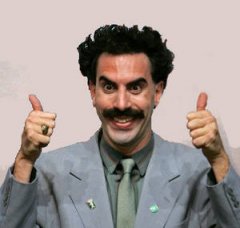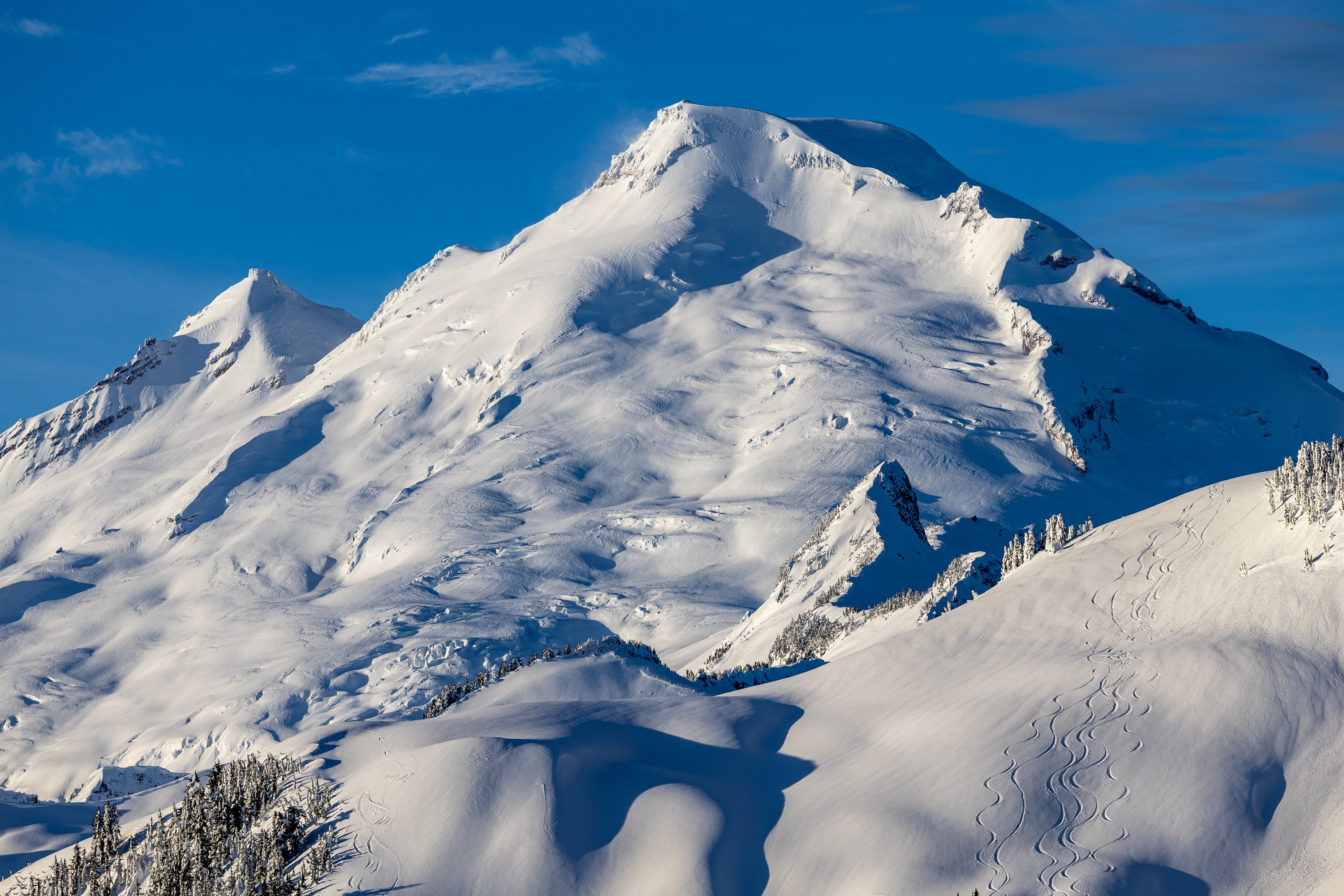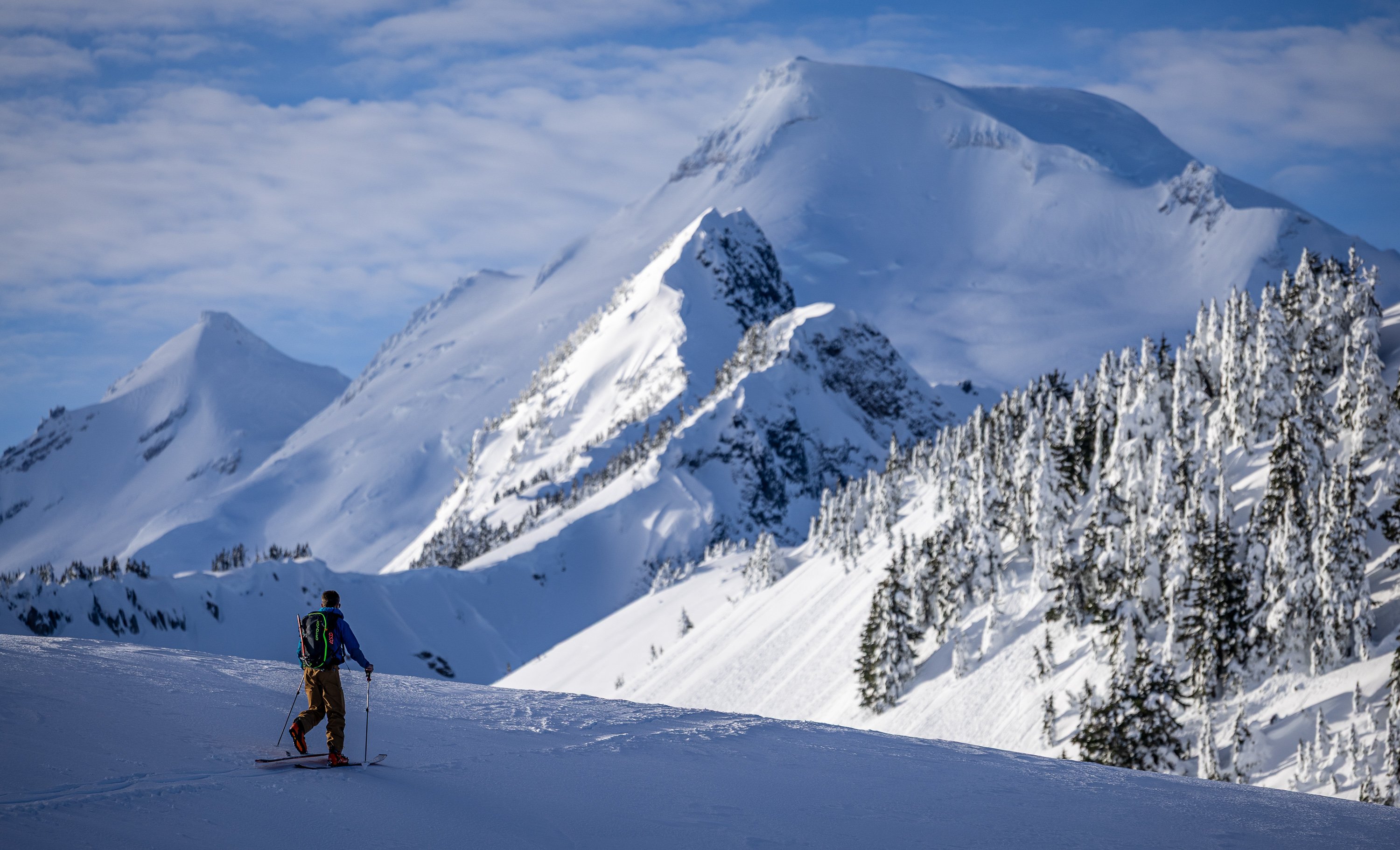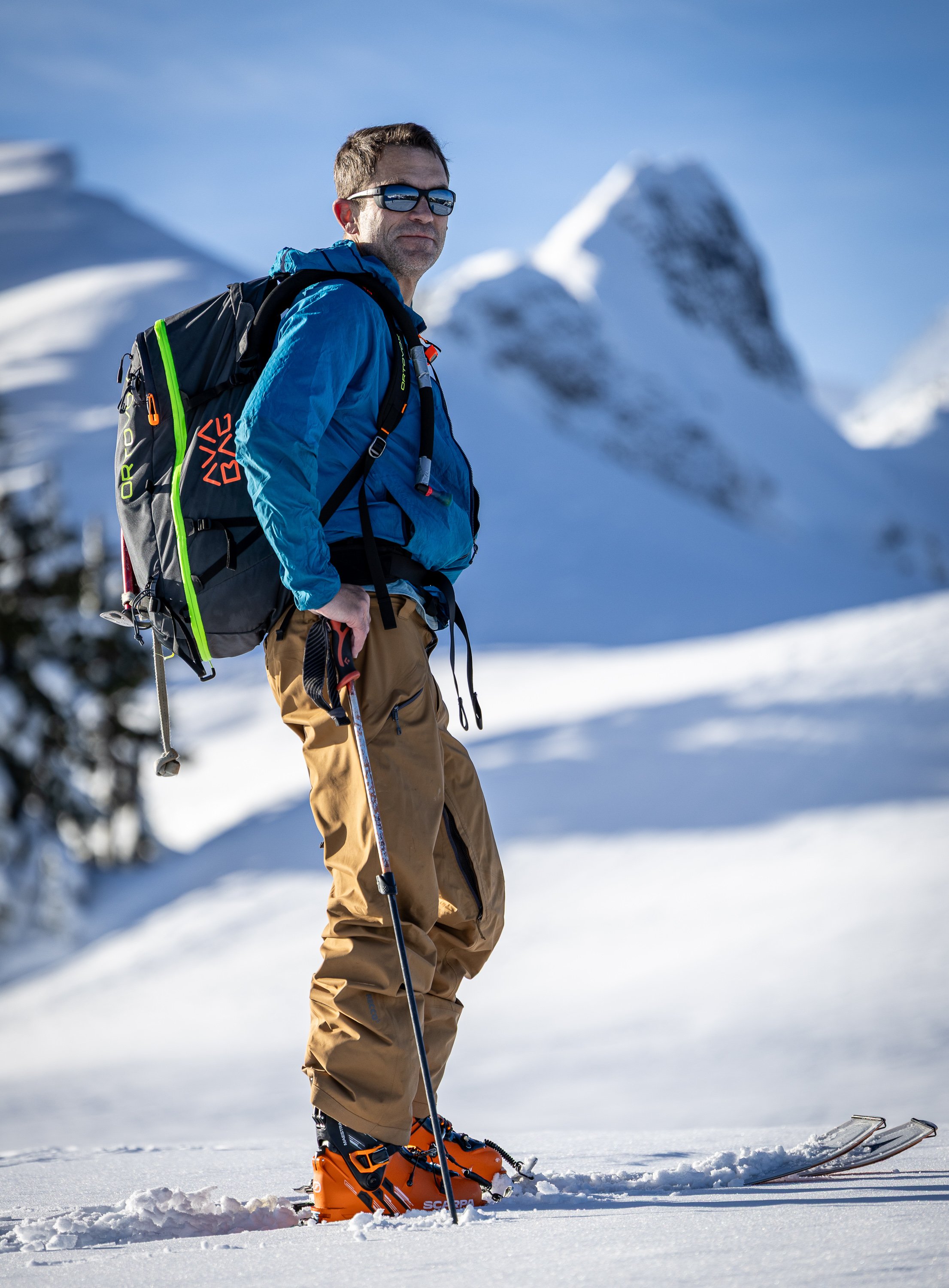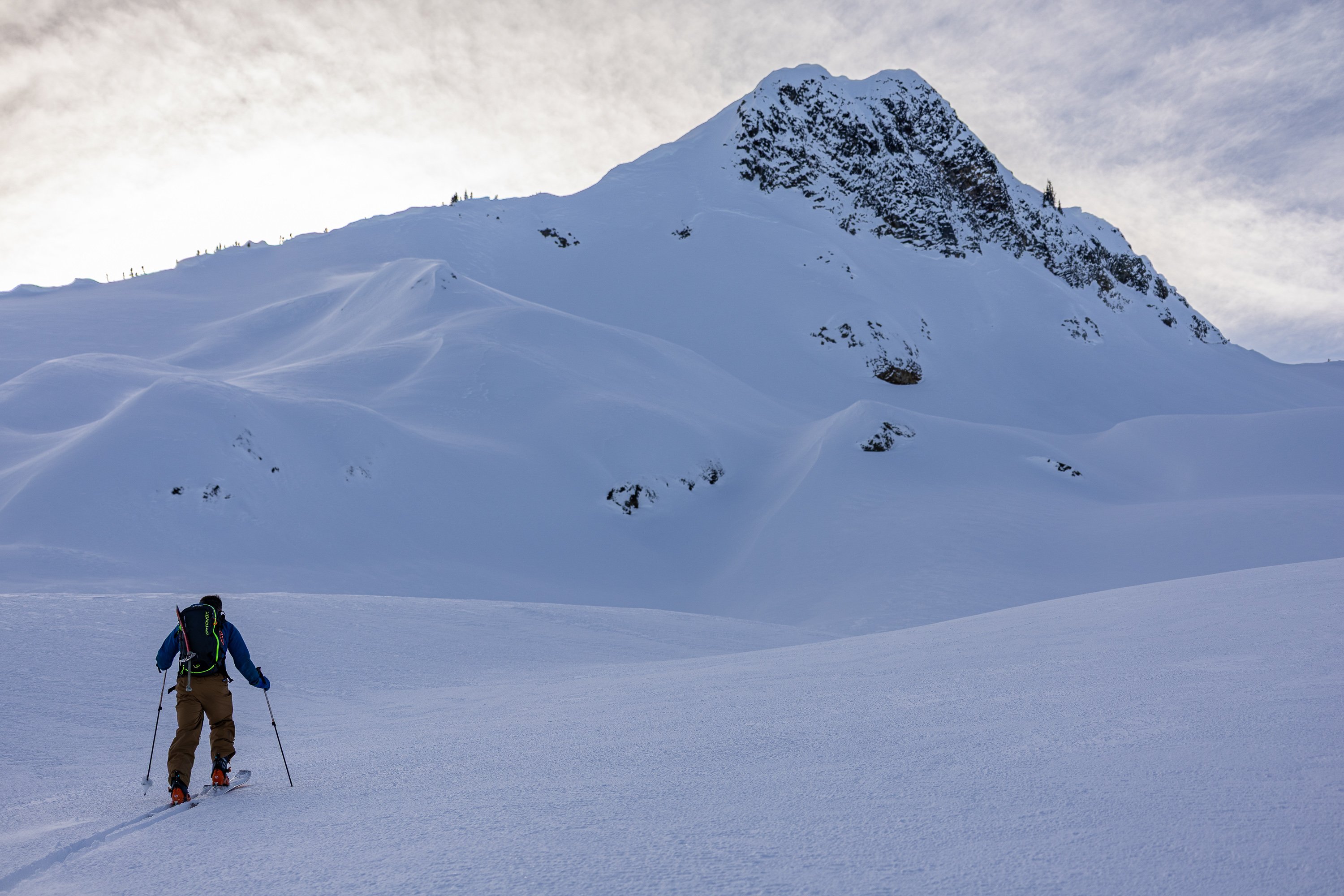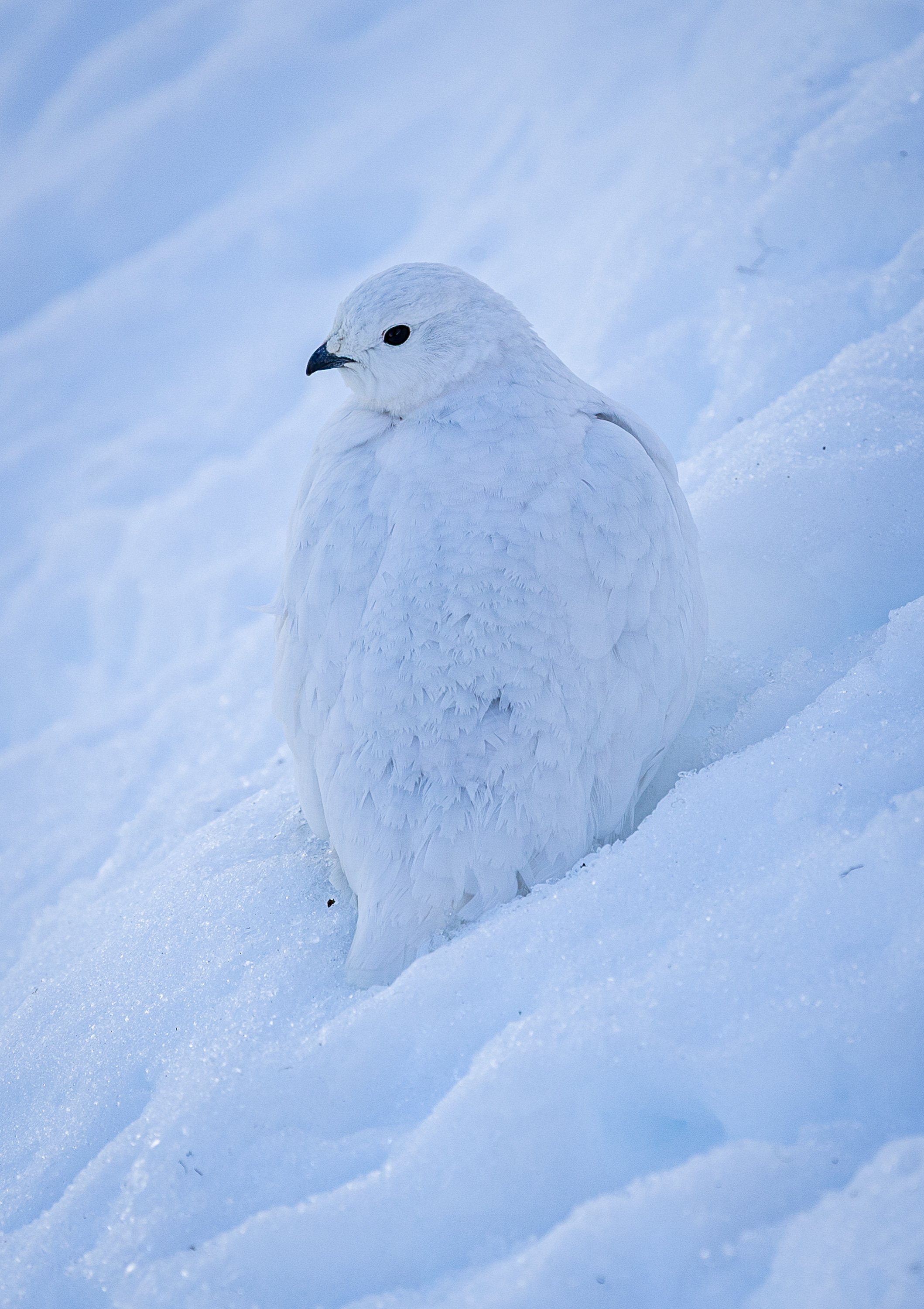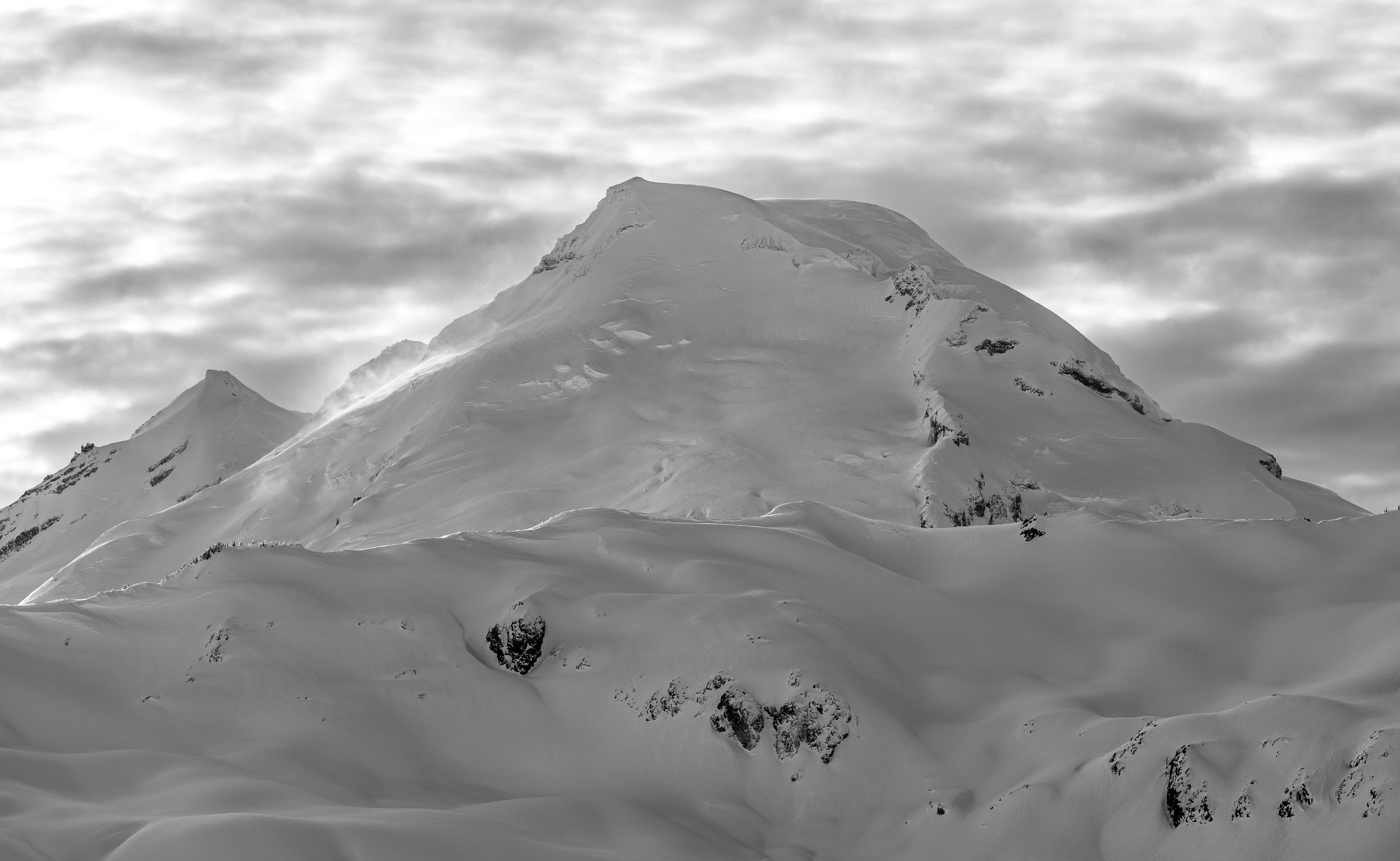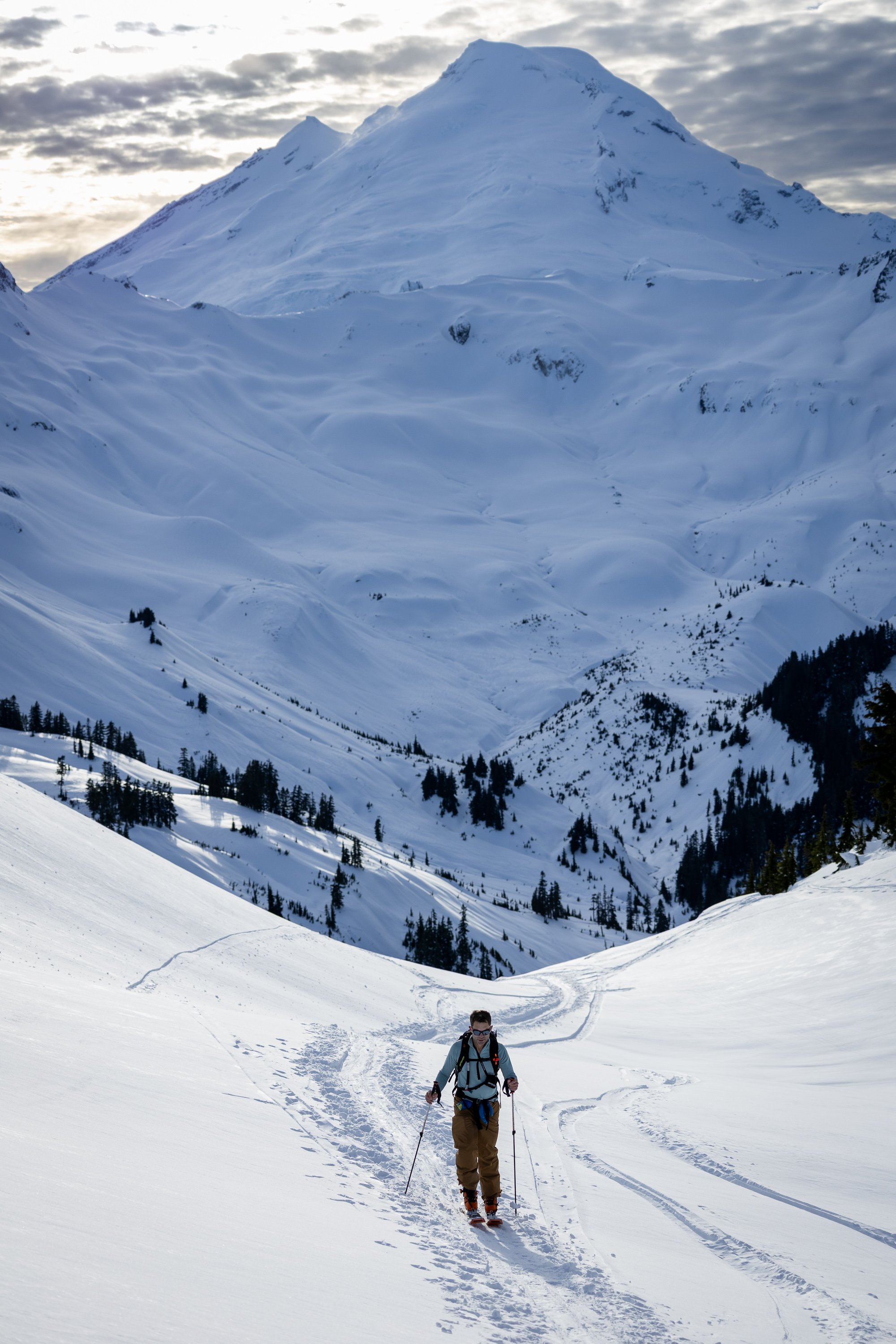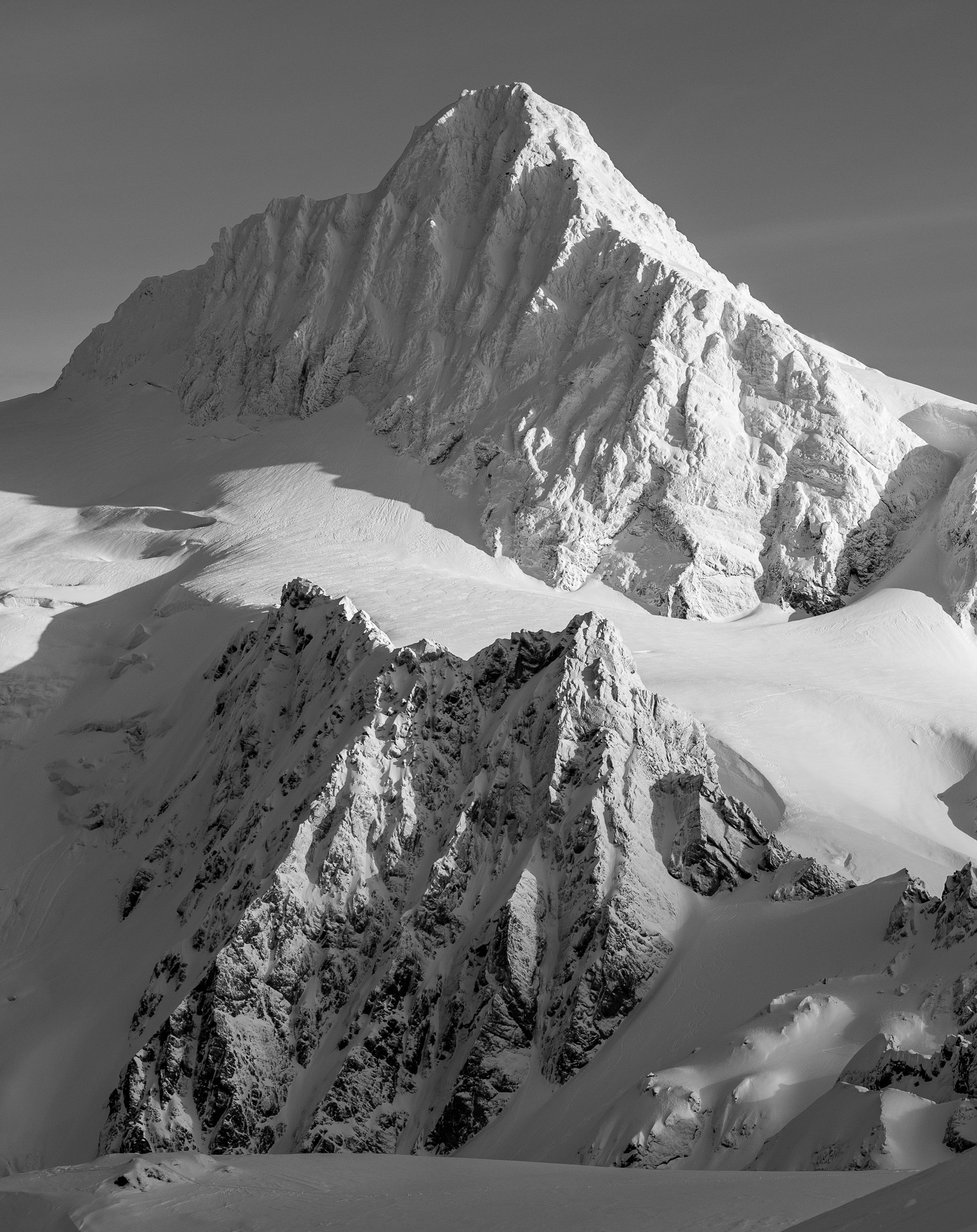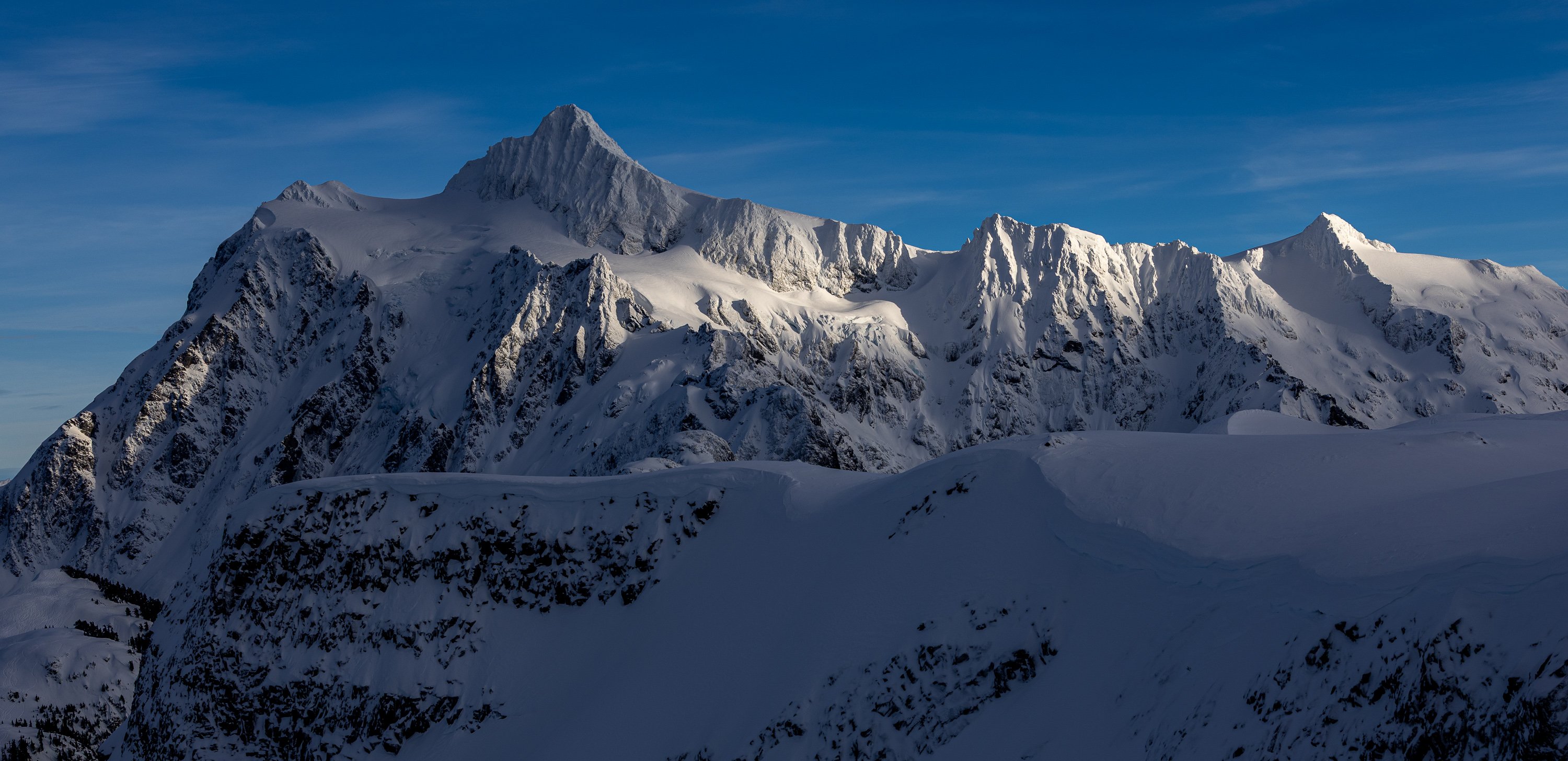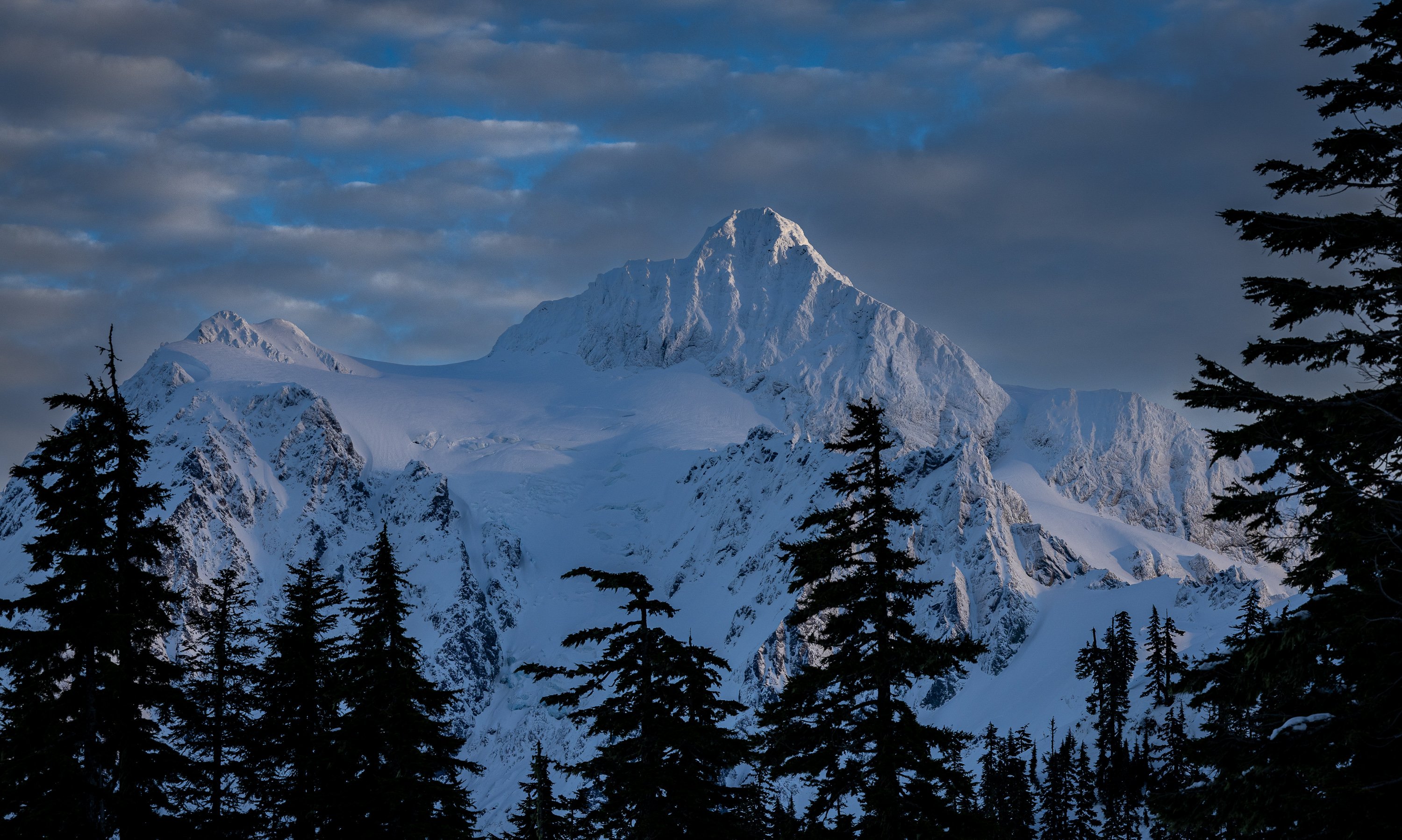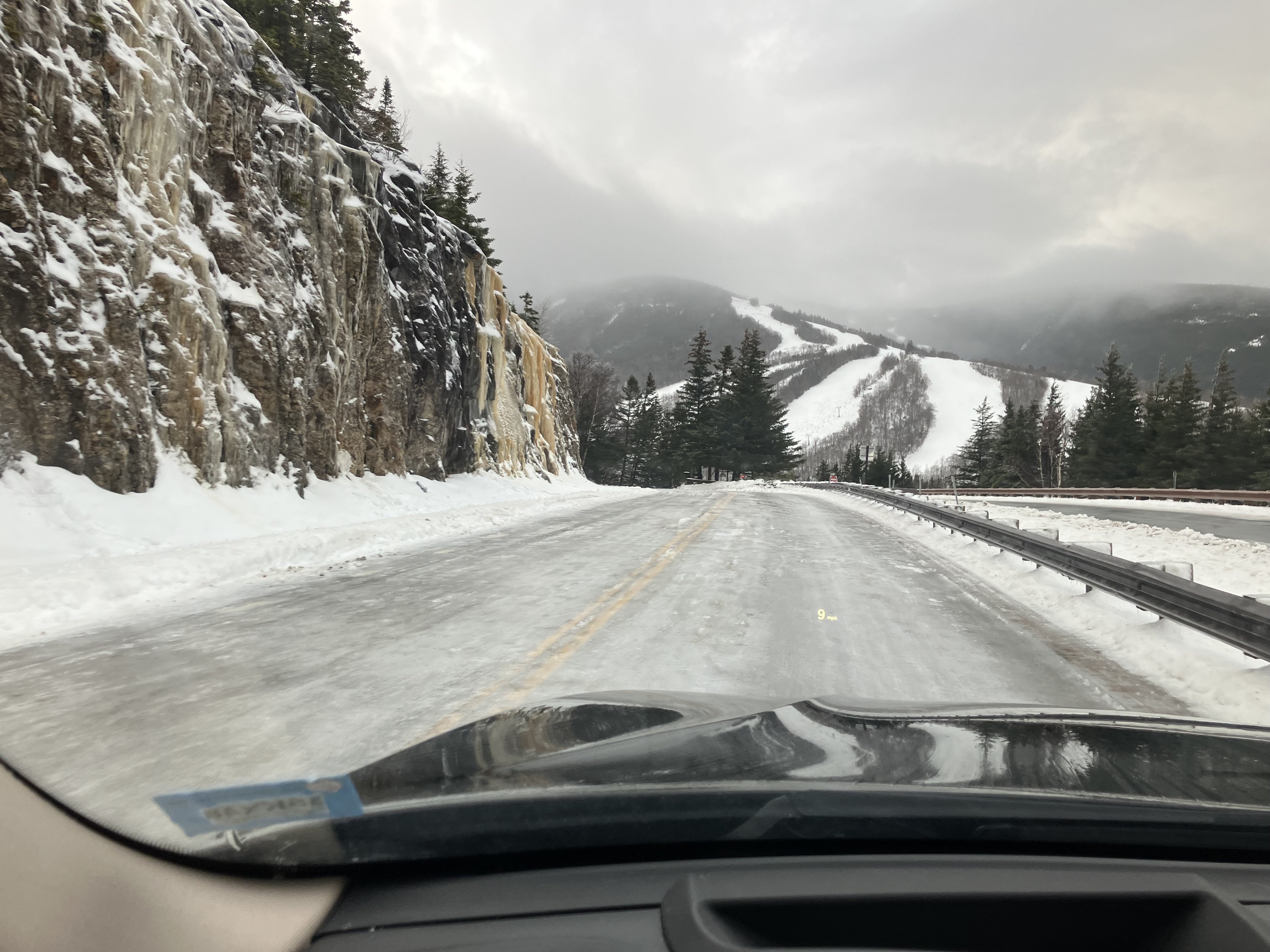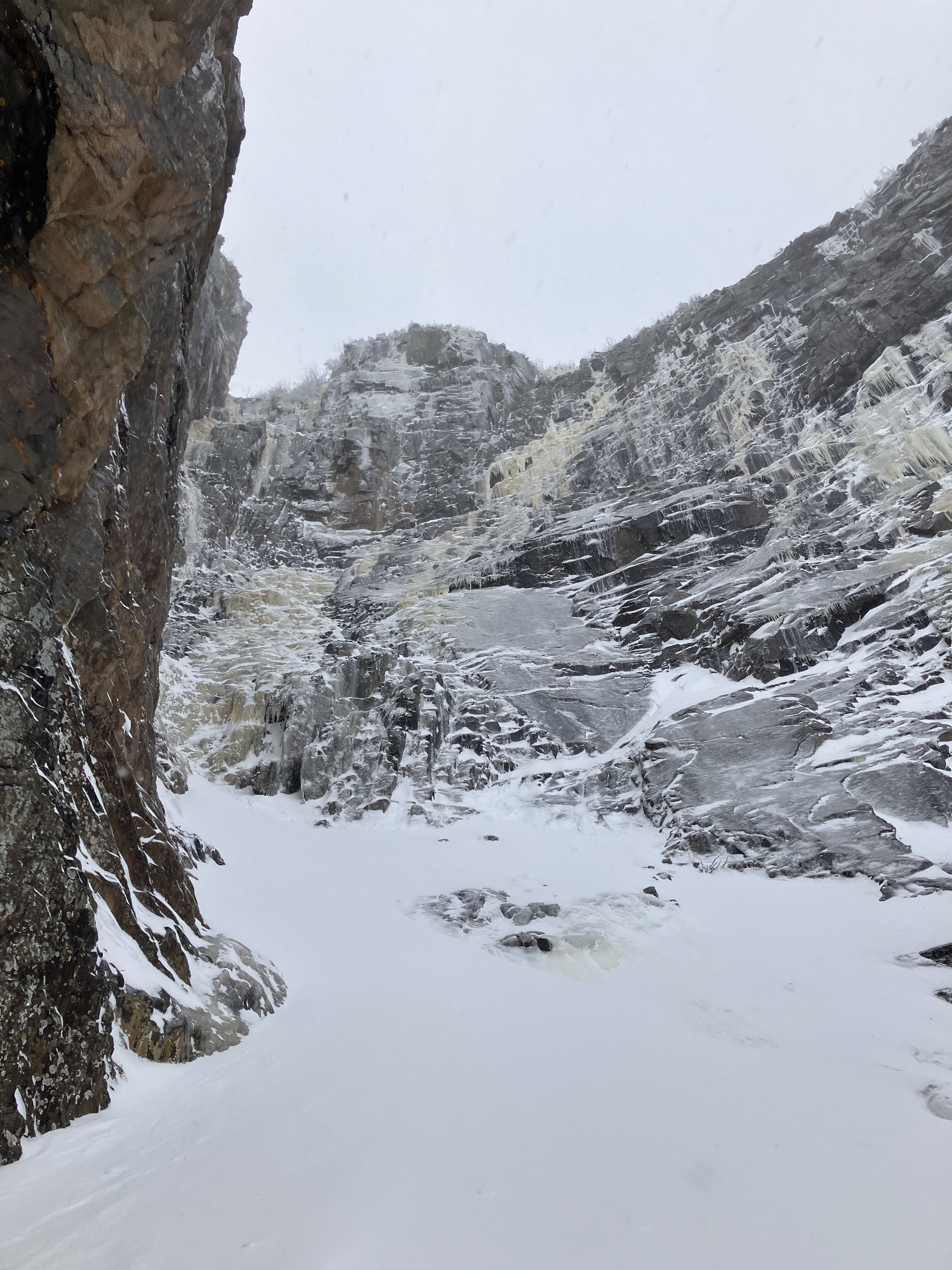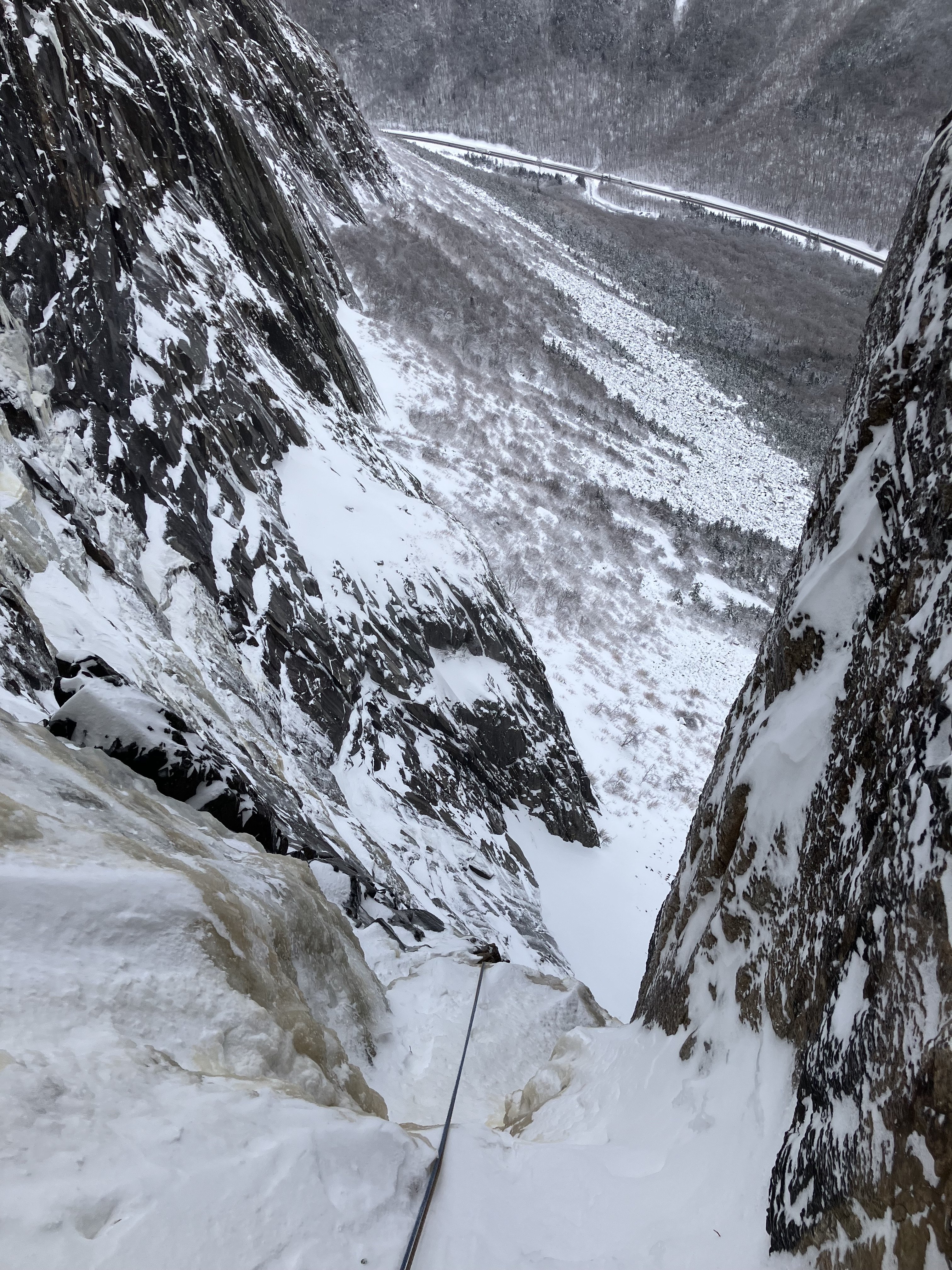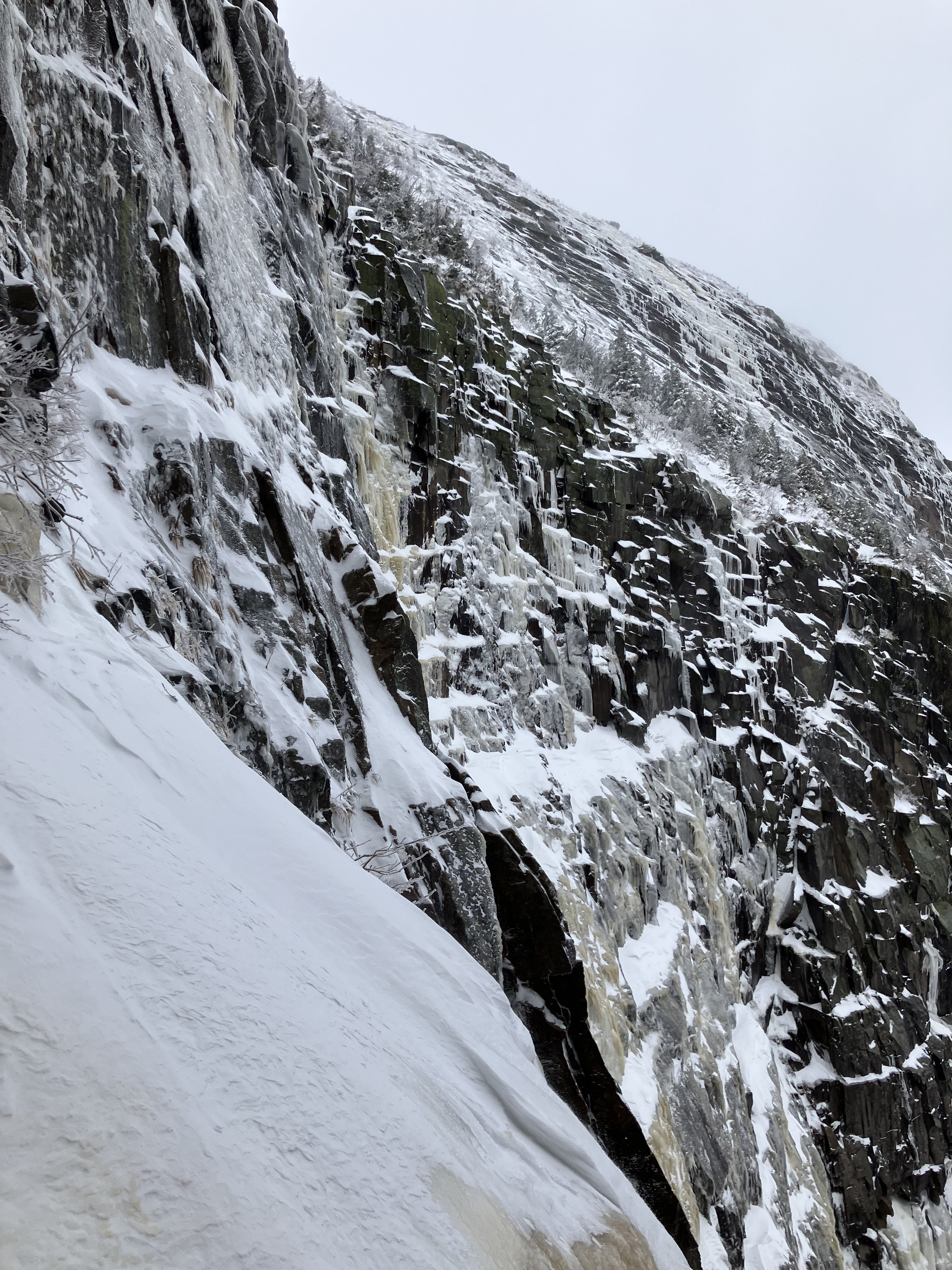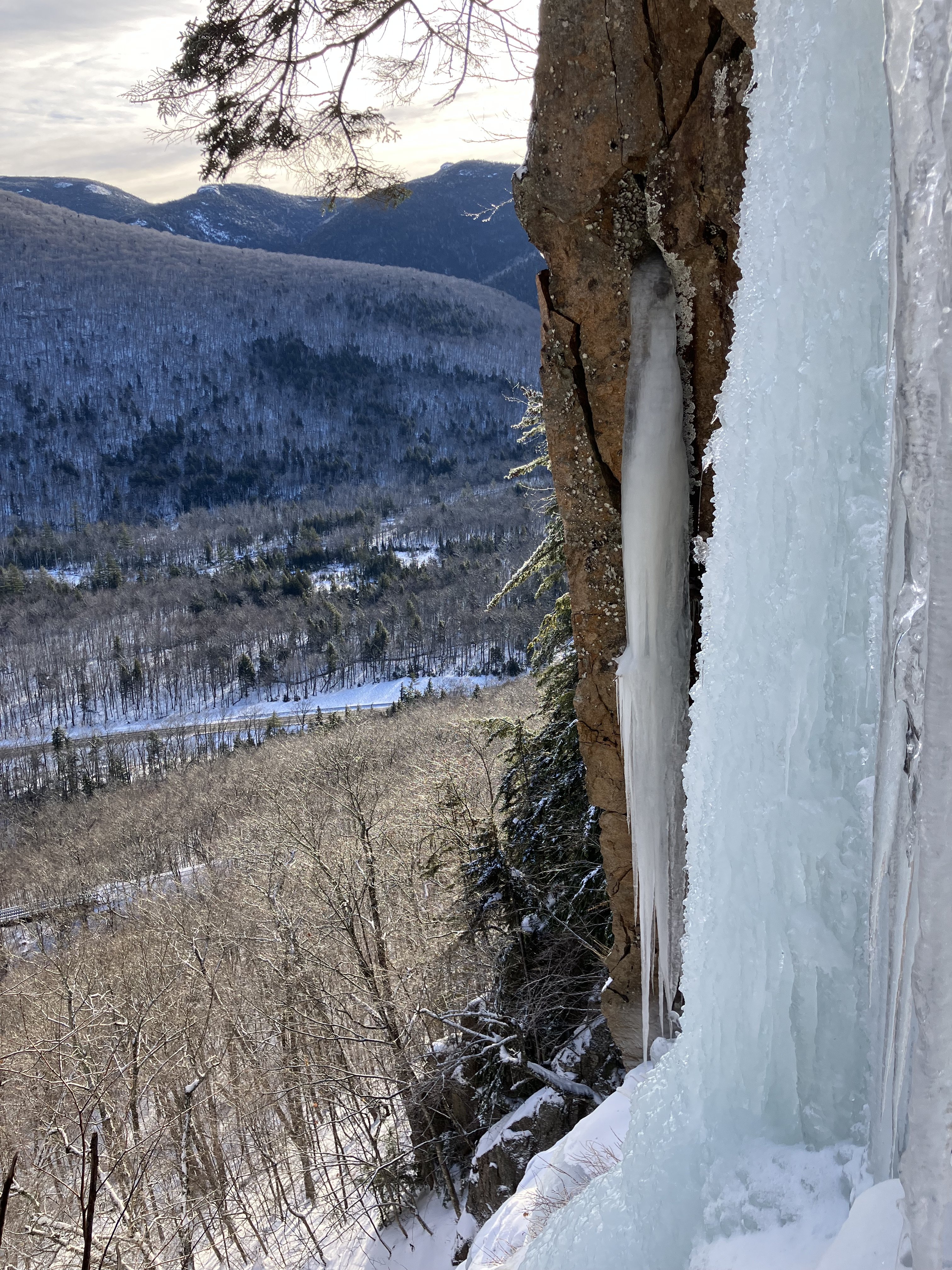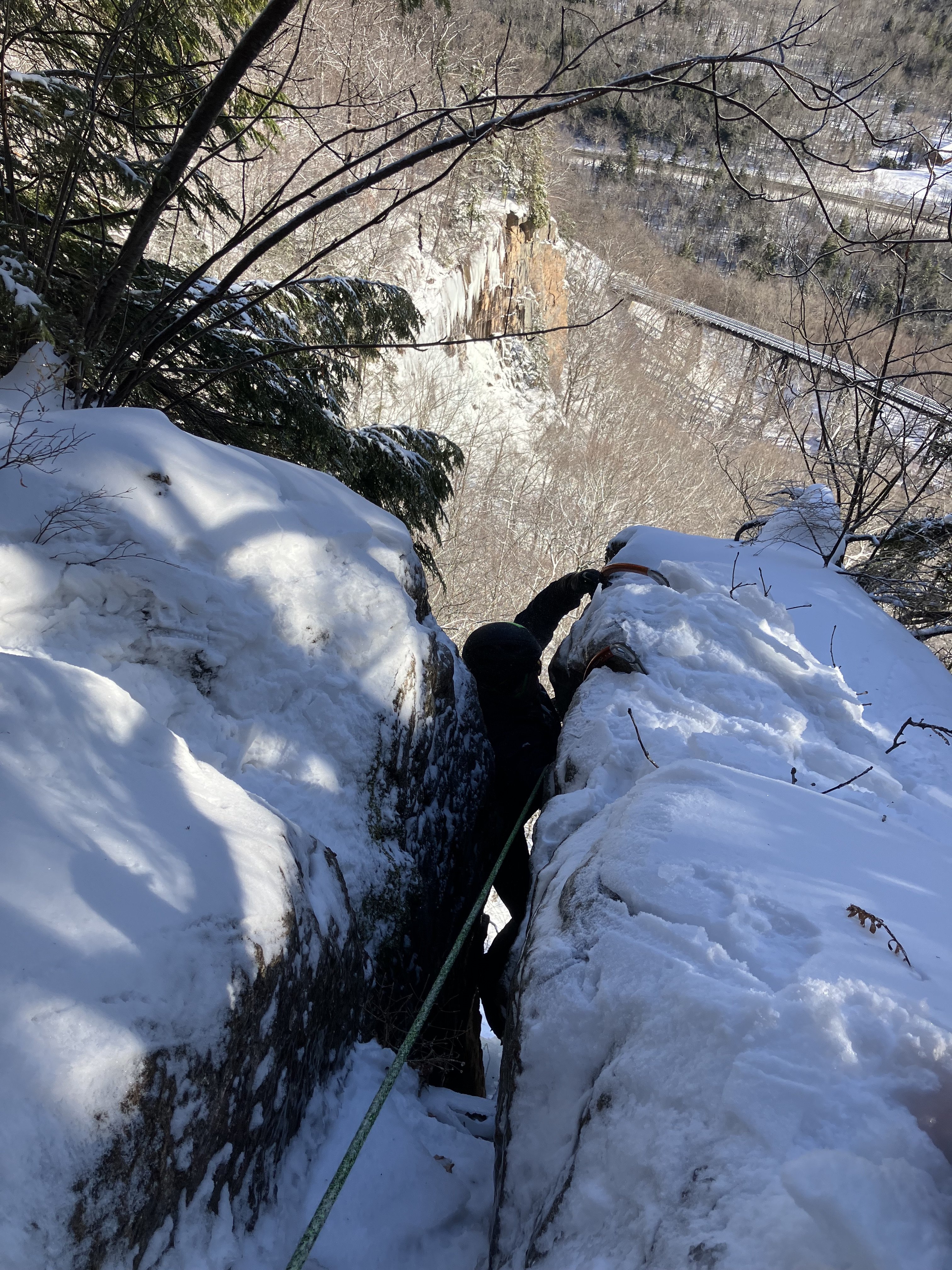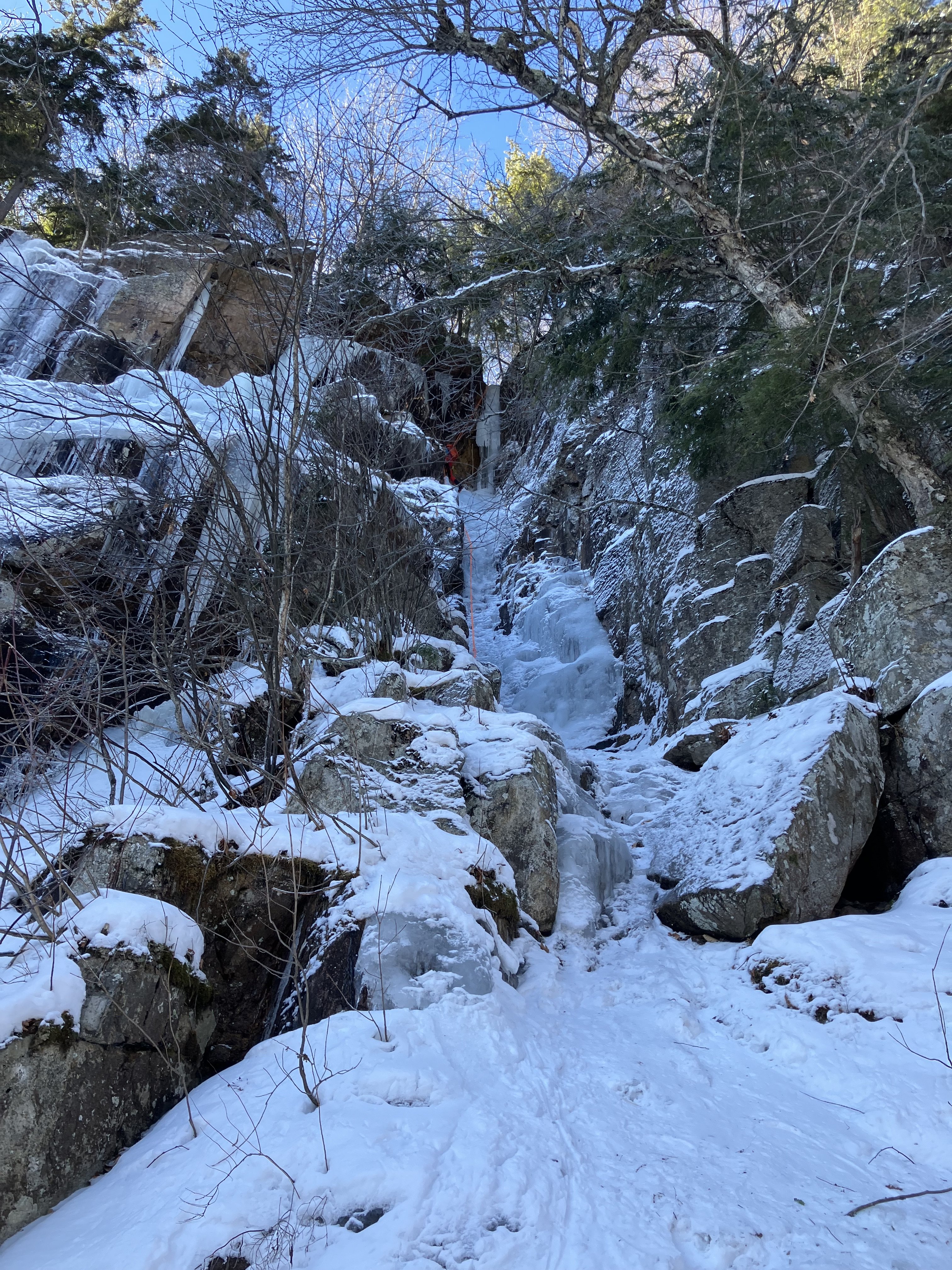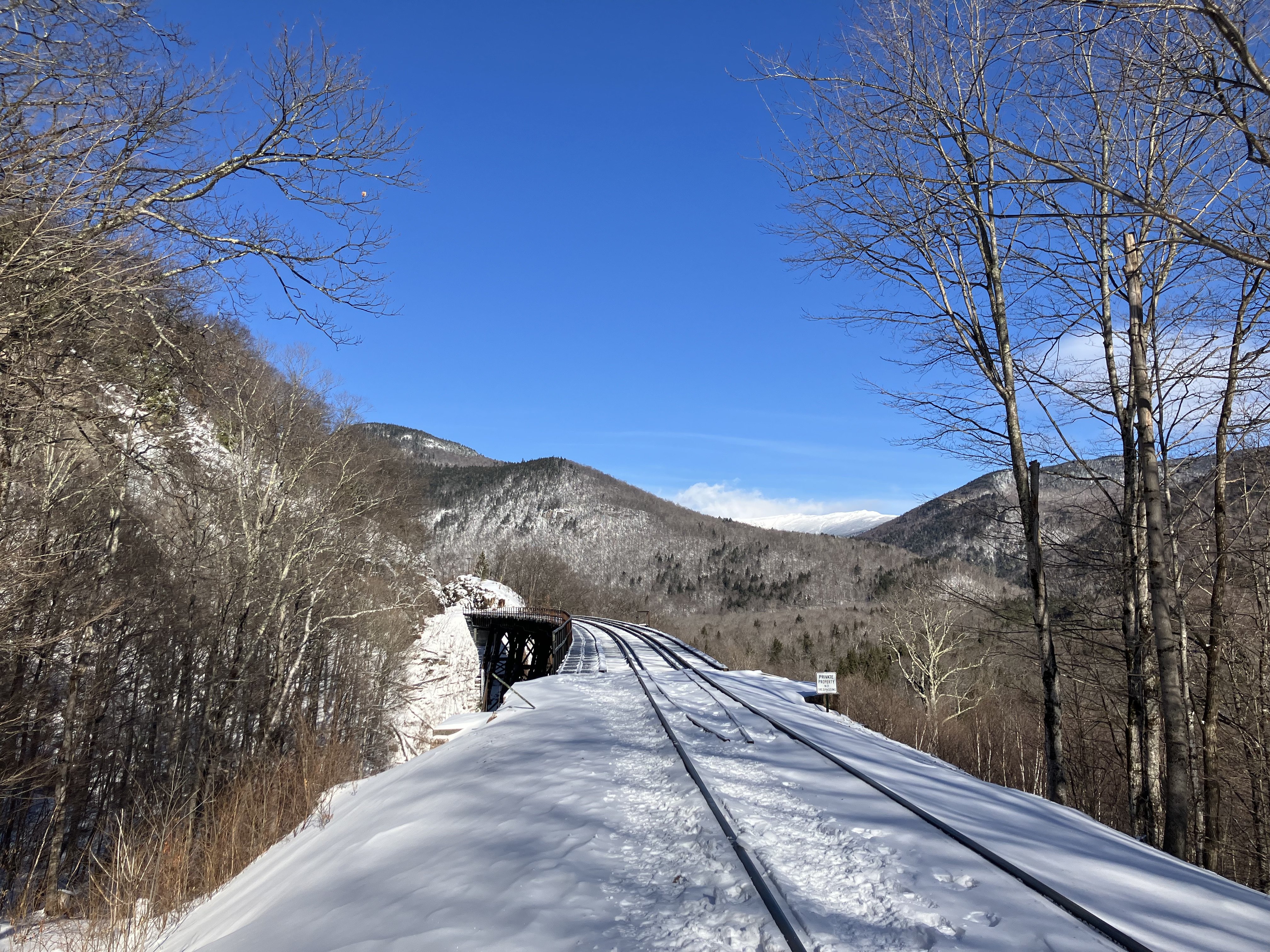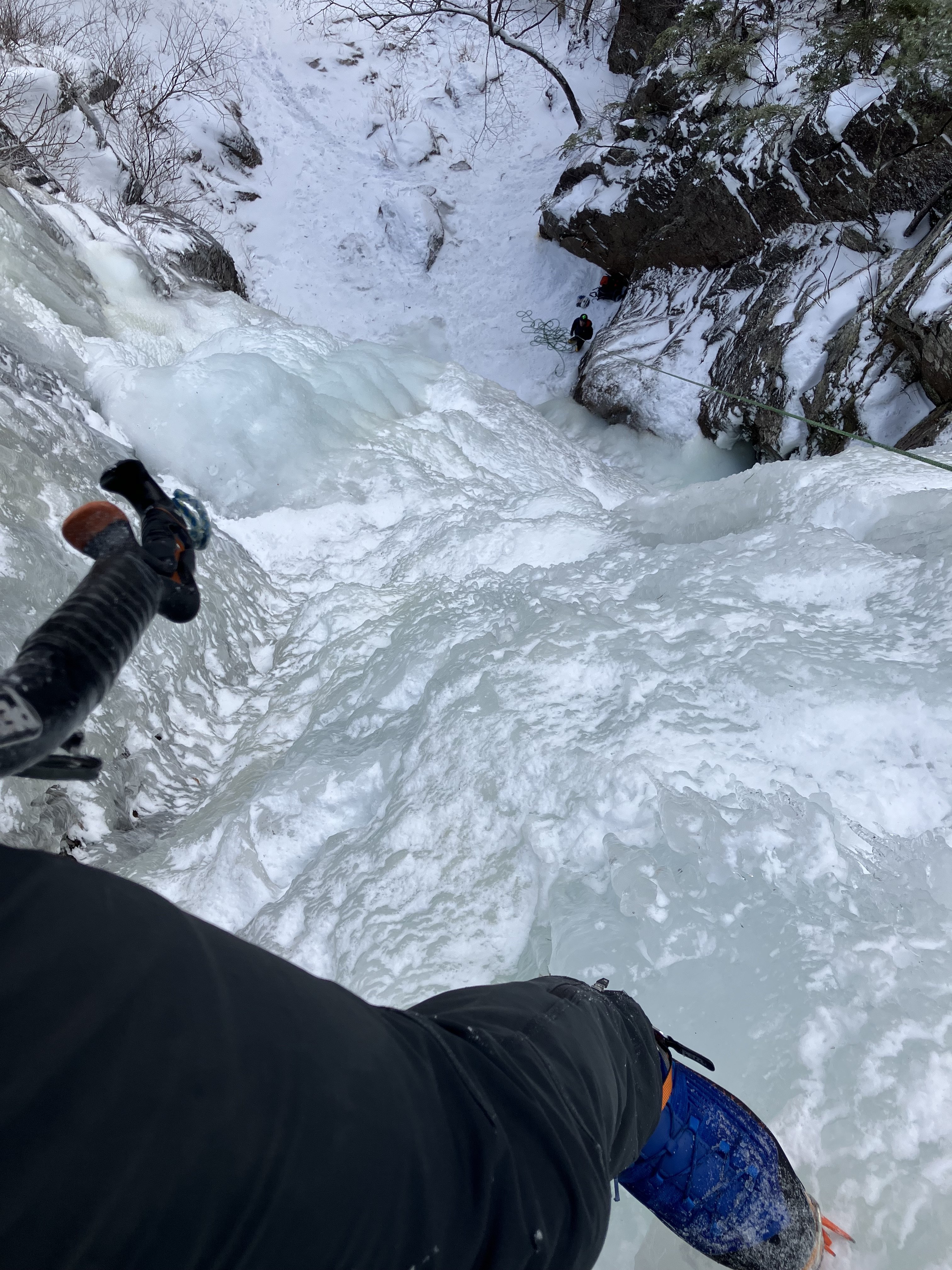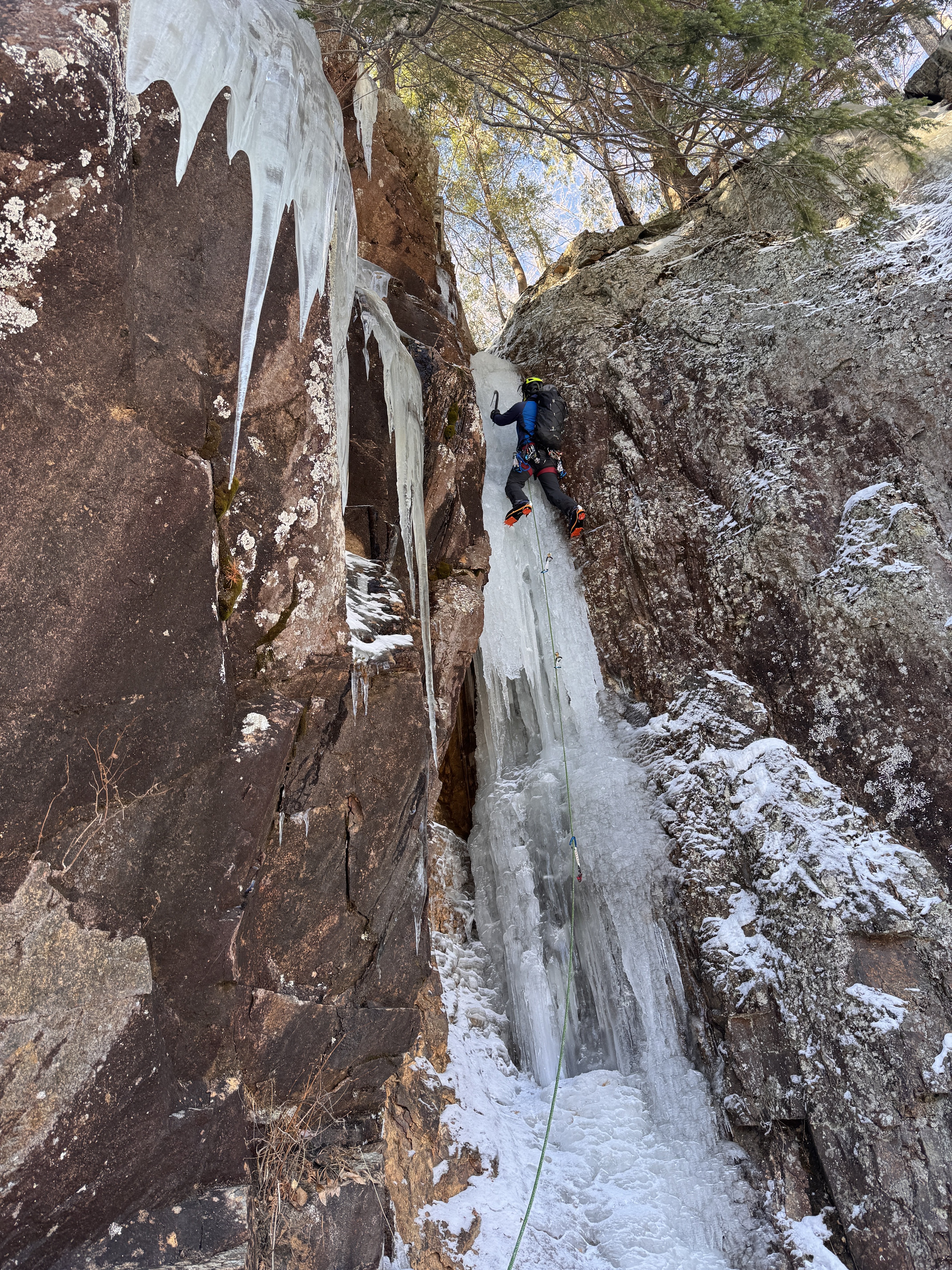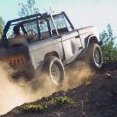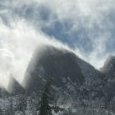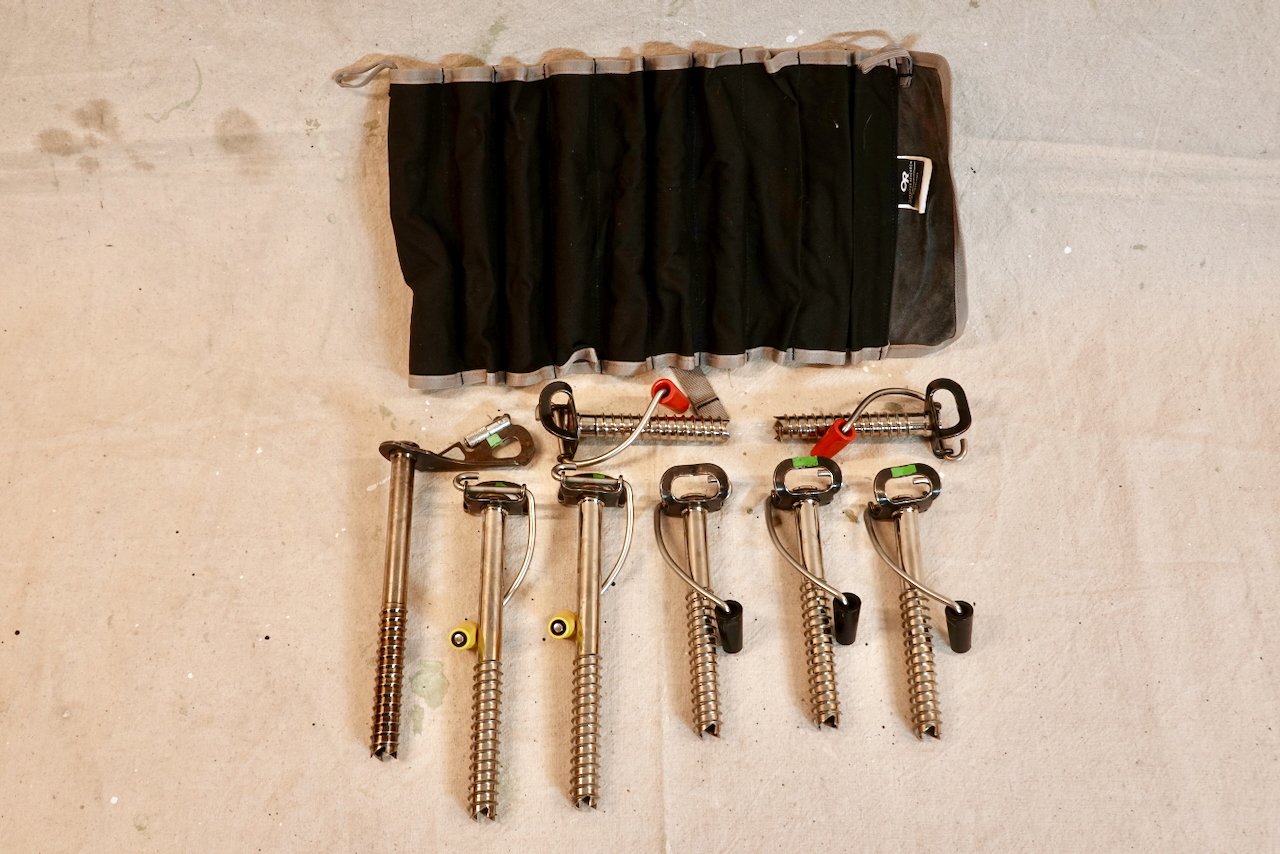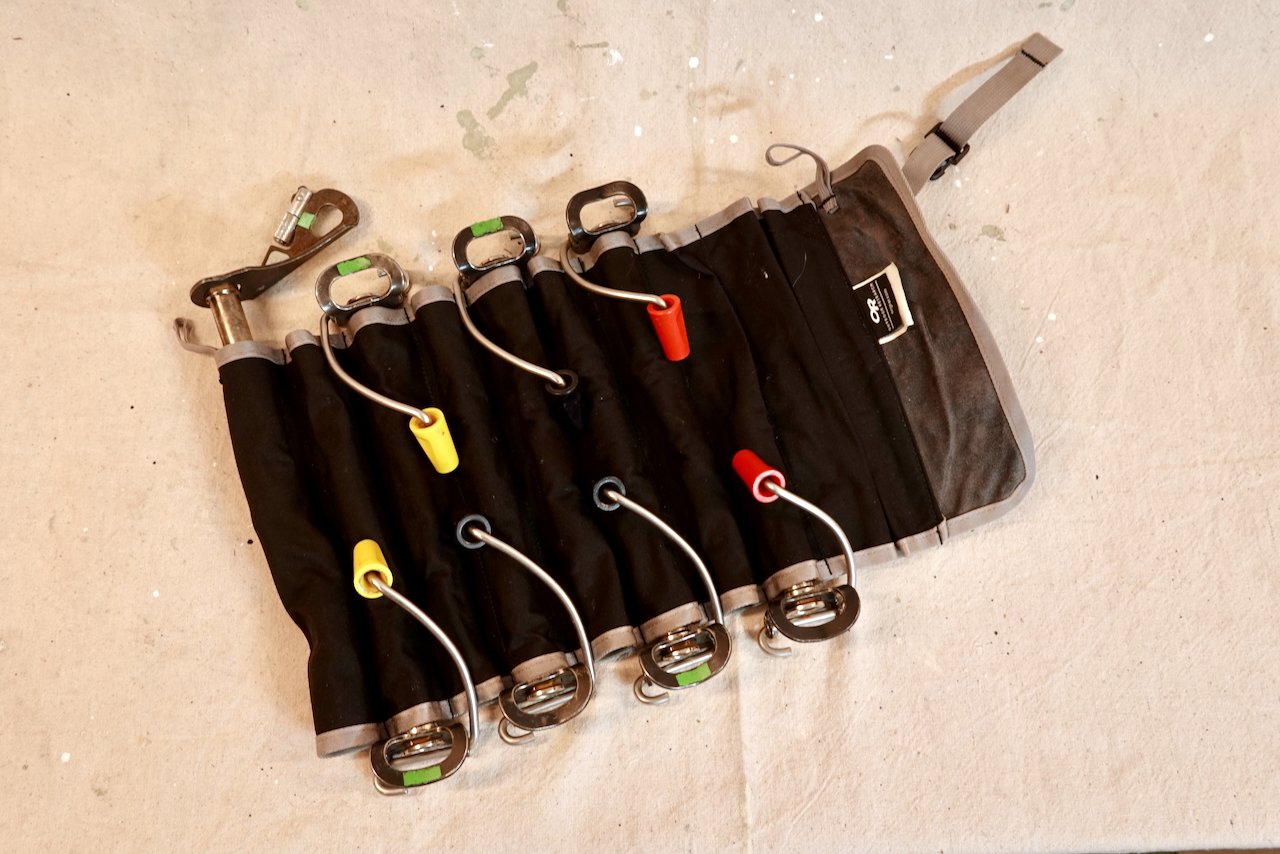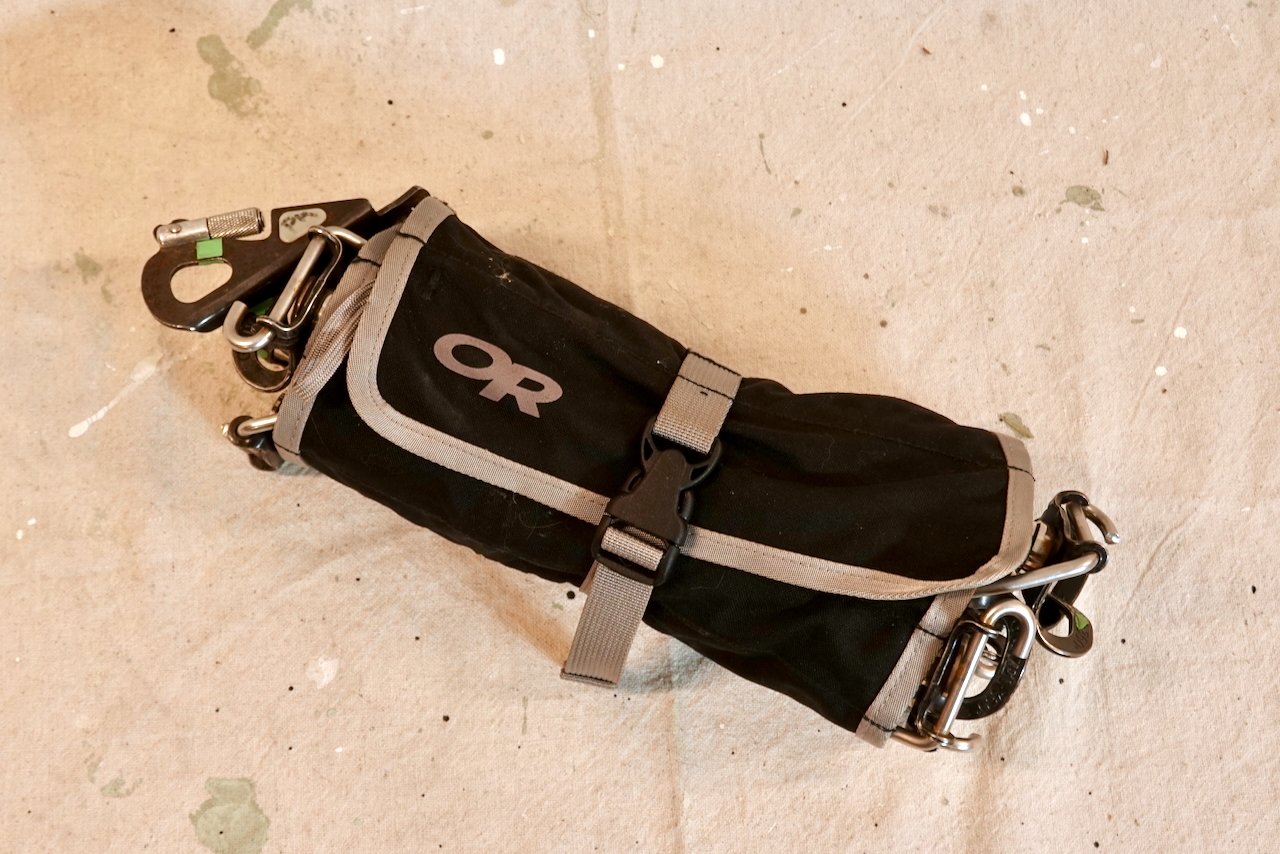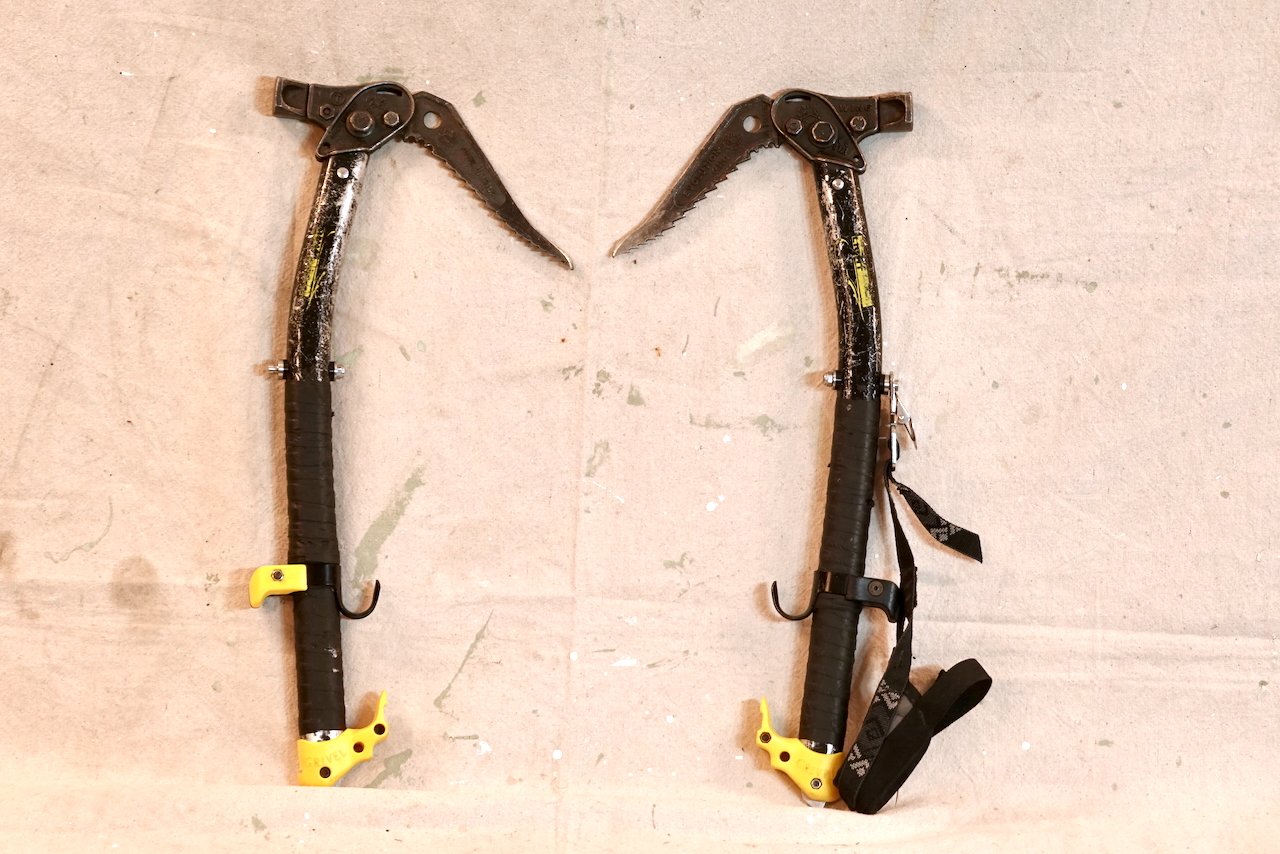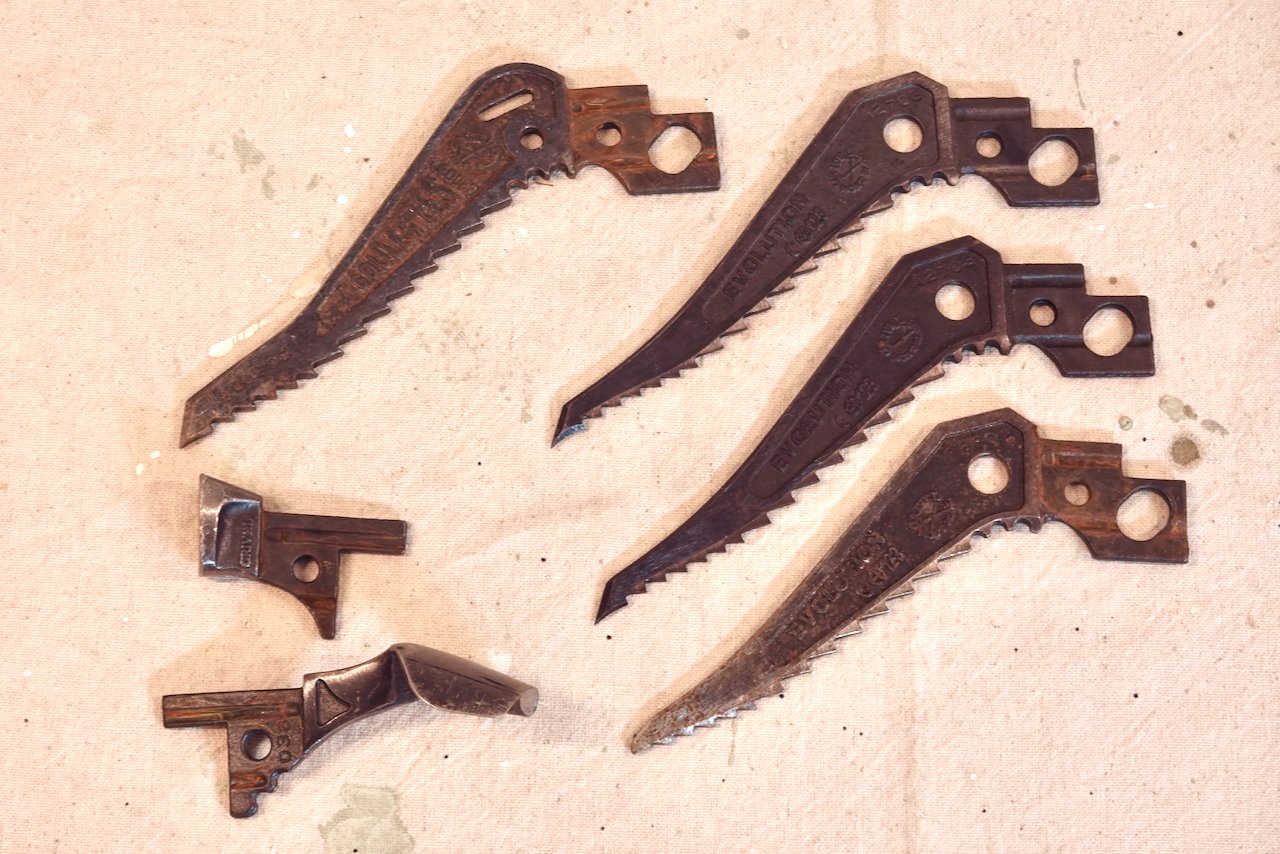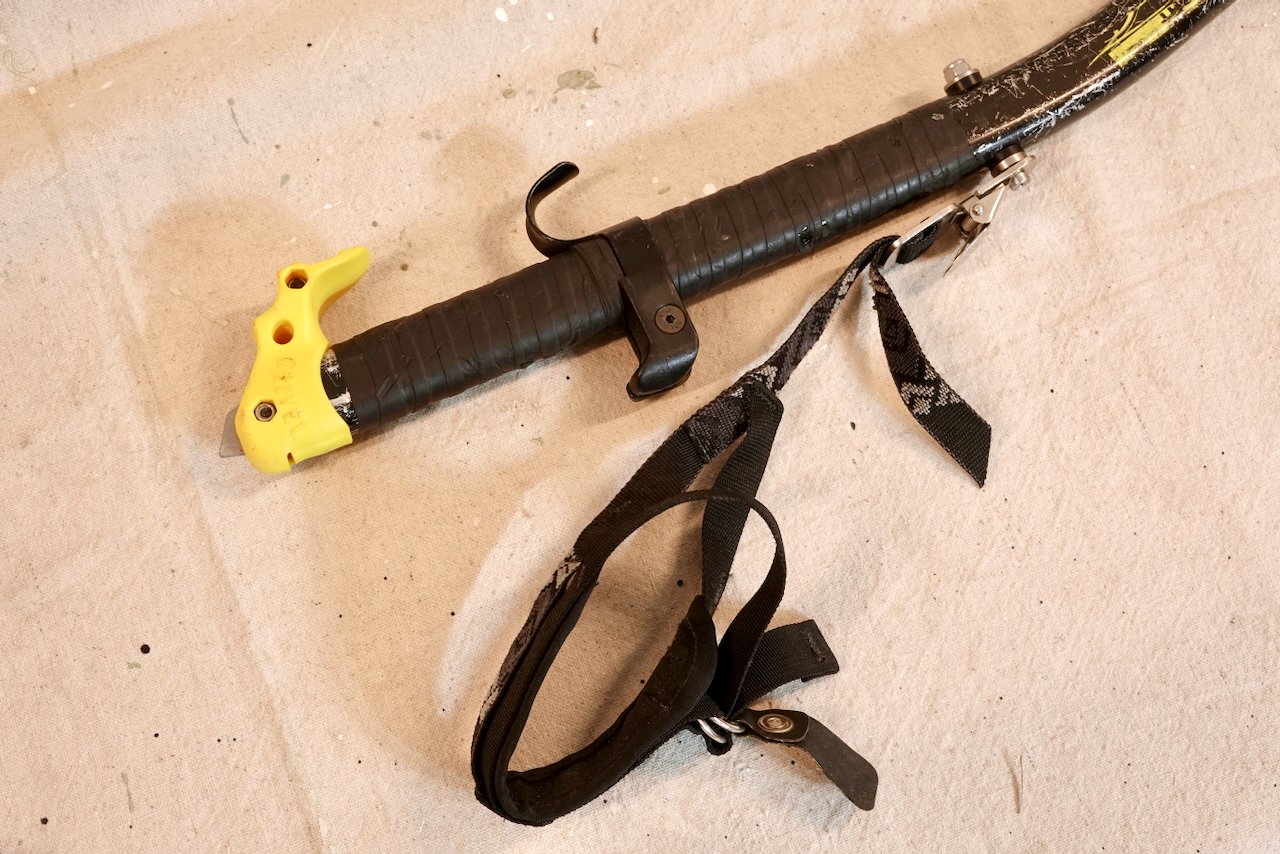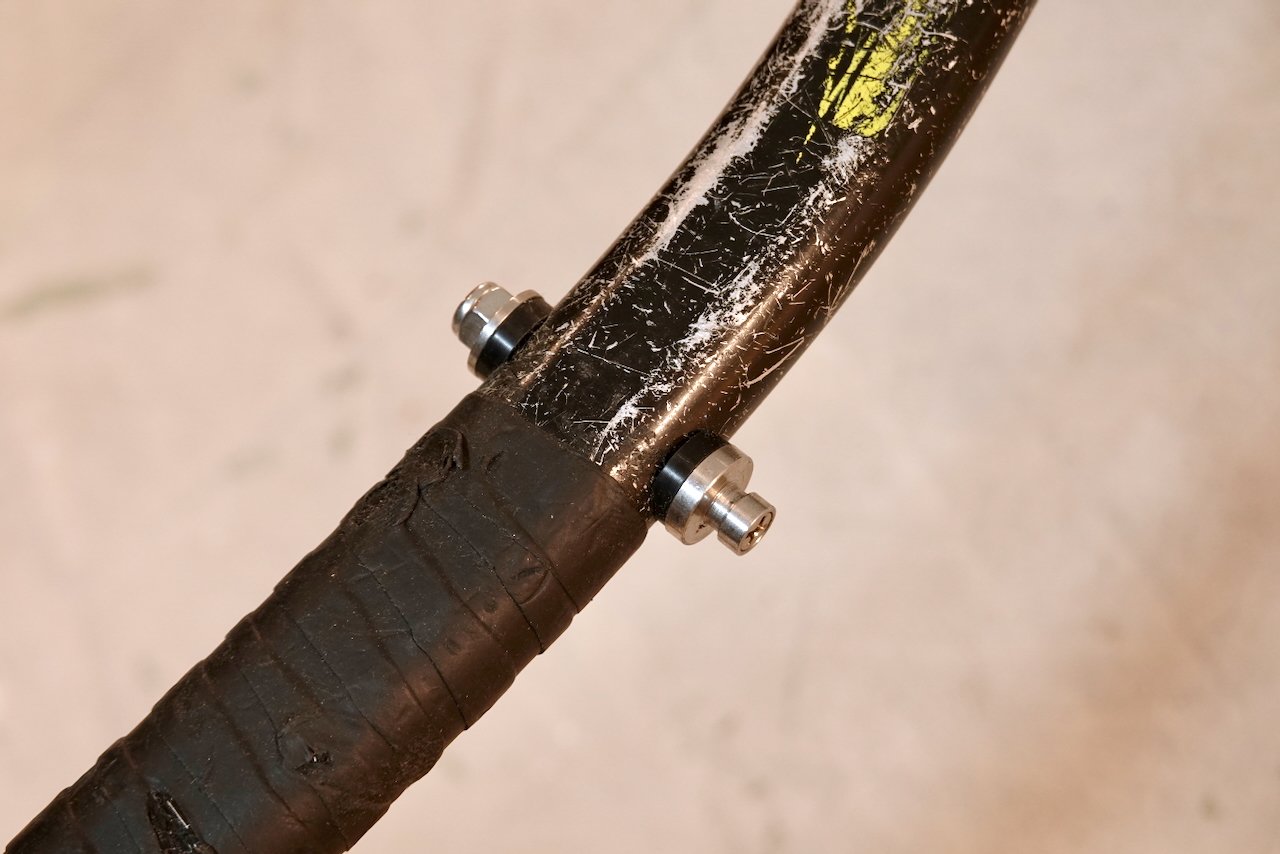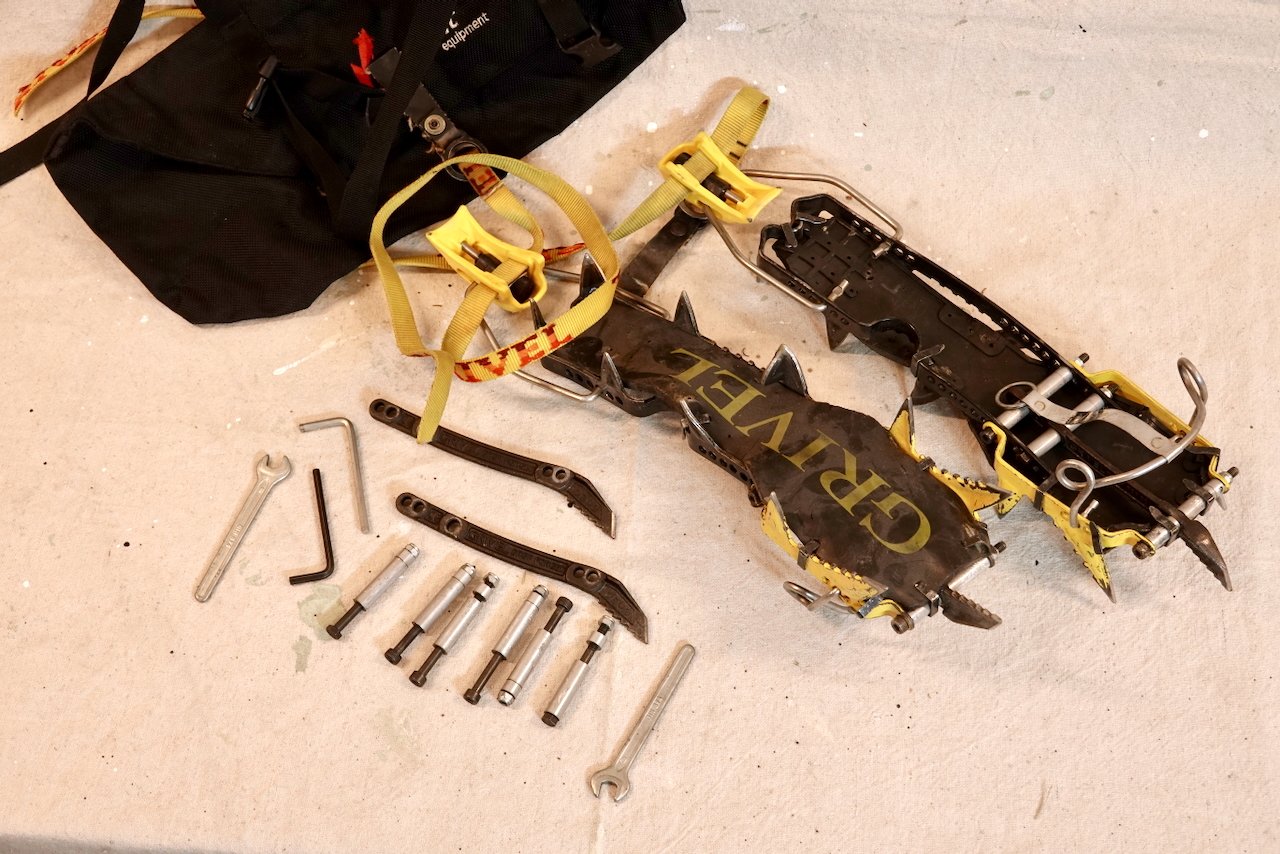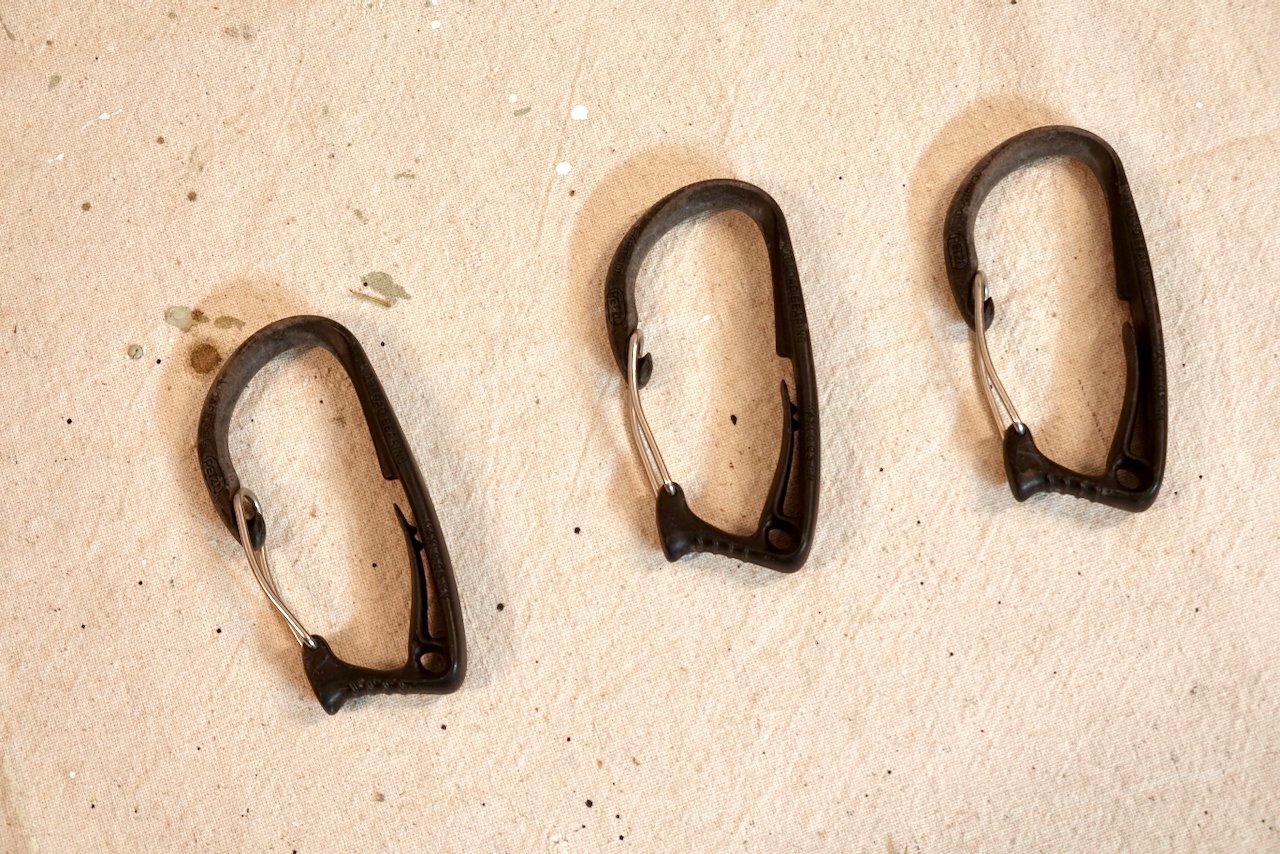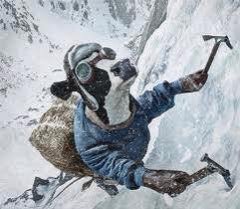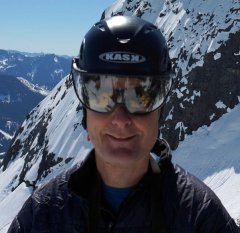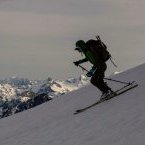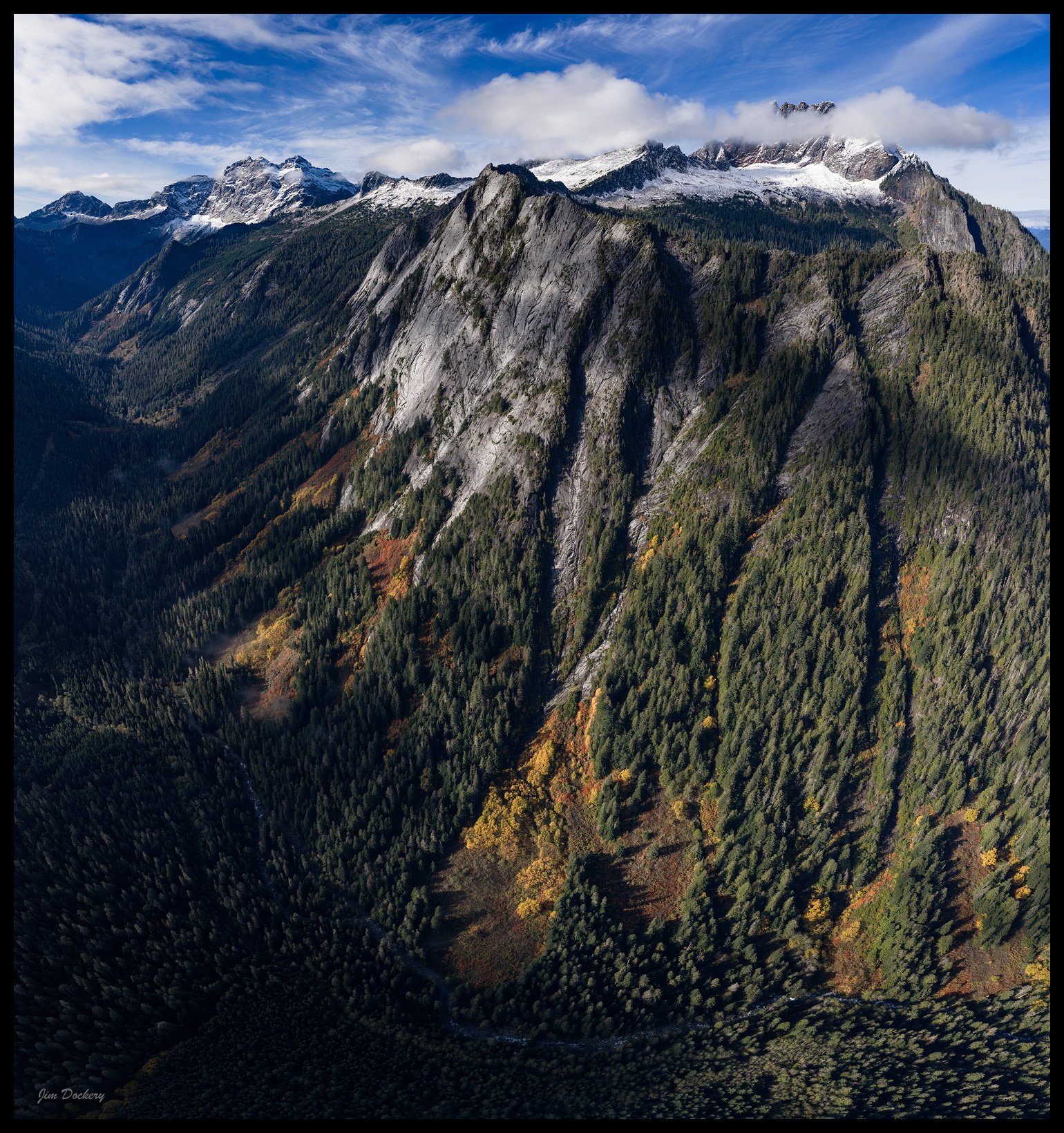Leaderboard
Popular Content
Showing content with the highest reputation since 12/09/25 in all areas
-
We are not dead! That was extremely trying. The server totally crashed in a terrible way right in the middle of a super intense week at work for me and I was taxed mentally to the max figuring this out. Luckily I have a couple really good friends, ex-coworkers...but they are friends to give me moral support and confidence to do everything I did which was rebuild everything on modern software. So the site is in a MUCH better place than it was pre-crash. I still have a bunch of maintainance to do, but the site is back up and going. Thank you for sticking around. We WILL keep this place alive dammit.17 points
-
Trip: Coleman Pinnacle - Standard Trip Date: 12/30/2025 Trip Report: It has been a slow start to the ski season. A very slow start. But despite the setbacks, I've managed to have a few good days the past several weeks up in the Baker backcountry. We're fortunate up this way in that our usual backcountry backyard emerged relatively accessible from the December Floods. US2 and 410 are quite so lucky. I've not been doing anything remarkable the past few weeks in the Baker backcountry, but I do have a new camera that I have been having fun getting to know and so why not post a few photos from the classic Coleman Pinnacle tour? This is an outing that I tend to come back to over the past 20 years or so, climbing it every 5 years or so if only for the views and the fun run down into Wells Creek. If you haven't been out that way.....you probably won't like it. Best to stay near town and reduce your carbon footprint. Sunrise from the parking lot: The classic view of Baker from Artist Point never gets old (to me): @Trent approaching the heli line: @Trent and Coleman Pinnacle: Der Shukshan: @Trent skinning up under Coleman Pinnacle: Summit of Coleman Pinnacle: Out to Chowder Ridge: Descending from the summit with Baker looming ahead: Ptarmigan in winter plumage down in Wells Creek: Windy on der Kulhsan: coming back up over Table on the way home: Shuksan is one of my favorites in the North Cascades: Sunset from the parking lot. As Ice Cube would say, "Today was a good day". Gear Notes: flotation, but please, leave the snowshoes at home. Approach Notes: Heather Meadows to Artist Point to alpine glory6 points
-
Trip: New Hampshah - Black Dike and Frankenstein Classics Trip Date: 12/30/2025 Trip Report: Was in New England visiting family for the holidays and got to sneak away for two days of ice up in New Hampshire. Lots of beta out there on these routes, but I will just reiterate what you probably know... the ice is plentiful, plastic and easily accessible. Worth a flight out from the NW? Maybe not given the other options much closer, but if the opportunity arises I recommend. I found this website to be very helpful for partners and conditions... https://www.neiceconditions.org/ ...They also do some great things (like the instagram hack) that seems like it might be useful here too. Day 0 scoping after freezing rain Like every road cut... Day 1 Black Dike High of 8F, 50mph gusts Pitch 3, harder than it looks Looking over at Fafnir... next time! Day 2 Frankenstein Clif Pegasus Rock Finish, Hobbit Couloir, Dracula + some thinner TR laps... 10-20 min walk from the car park. Pegasus Rock Finish is a second pitch alternative that goes up the pillar... Partner topping out on the Rock Finish... Partner's shot of the top/crux of Hobbit Couloir... HC and PRF from the ground... Approach vibes... Dracula... Gear Notes: Standard ice kit Approach Notes: Micro spikes were helpful4 points
-
I just had someone offer to buy this site. I didn’t get as far as how much or anything like that but it was a real approach to buy it. By someone who runs online communities in other spaces. I thanked him, his approach was genuine and I think it’s possible his group could run this community in a thoughtful way. But I turned it down. This site is not for sale. At least not by me. When a site is bought and sold the community becomes a product. There is then a need for the community to turn a profit somehow. i have a different vision, of making this site a nonprofit organization that benefits our community and those adjacent to it. That gives an option online for people to connect and share where we are not the product and are not being mined for our data or to be fed directly into the AI machine. But I can’t do this on my own. So if you or don’t you know is interested in helping please reach out. I’ll share more of my vision here but I’ll also listen, particularly to active members of the community. This is not mine, this ours.4 points
-
Yep. That was me. I have a picture of me holding the approximately dictionary-sized rock that came through the tent while I was sleeping at thumb rock and embedded itself in the snow about 12 inches above the top of my head. It would have killed me if it had been 18” lower. Weird waking up in a fully zipped up mountaineering tent due to a weird noise and looking up and seeing the night sky. Wait, aren’t I still in the tent?2 points
-
2 points
-
Trip: Strathcona Provincial Park Ramblings - Big Interior, Septimus, and Kings Peaks Trip Date: 07/21/2025 Trip Report: This past July @Trent and I went on a ramble to Strathcona Provincial Park up on Vancouver Island. We were supposed to meet up with @wbk at the end of the week to give the Colonel Foster Traverse a go, but we wanted to ease into it. And so we did, sort of. Or maybe we just got schooled by the "Island Alpine" we had heard so much about from @wbk. First off we had to navigate the BC ferry options to the island, which tend to book up early. Nevertheless their ferry system makes ours look decidedly second class, and it all worked our pretty smoothly once we were booked and in line. First stop was the trail to Bedwell Lake which I suppose is a good trail by Island standards, but a grunt nontheless. The bugs weren't bad at the lake but increasingly became annoying as we climbed to our camp just below Jim Lake. We were up early the next morning, rambling up and across on the climber's path to Big Interior. It turns out most use this as an approach to Nine Peaks, but we didn't fancy carrying all of our overnight and climbing gear over the summit and so we settled for the "approach" summit of Big Interior. The bugs, heat, and humidity followed us every step of the way. Nine Peaks from Big Interior: @Trent pulling up on to the summit of Big Interior: The views, of course, were grand, and we barely knew any of the peaks in any direction. So much to do in every range it seems like, there is never enough time to climb them all! But we at least had to climb another on this trip, so we reluctantly retraced our steps to camp. And then promptly moved it to Cream lake, to prepare for the aptly named Green Ridge on Septimus. Camp at Cream lake with Septimus looming above: Septimus: Cream lake: We were up early the next morning, crashing around the lake and down, down, down to meet the start of the Green ridge. Do not underestimate this approach! It is every bit a thrash as anything in the Pickets or North Cascades and was especially character building in the heat, bugs, and humidity. Thankfully we were through most of it in a few hours and soon battling the steep rock and veg into the alpine. @Trent out of the brush and about to do battle with steep veg on the Green Ridge: But soon enough we emerged into the full blown Island Alpine and the grand north wall of Septimus and Rosseau was revealed: Looking down at Green lake from Green Ridge: As we scrambled higher, we came across one of the more vivid bits of rock I have encountered in the mountains. Maybe some pillow basalts that have been smoothed by ice? And then a short rap, some steep snow and steeper rock (but still 4th class) as we wheezed our way above the bugs and on to the summit of Septimus: @Trent on the summit of Septimus: There was quite a flower garden directly on the summit of Septimus: And then the 5-6 raps down the South (regular) route on Septimus. We had heard that you may need two ropes to make this work, but it went fine with a single 60m. Take care if anyone is below you though, much loose rock! By the time we got back to camp it was late afternoon, the bugs were fierce, and a swim was called for to think about our options. It was decided that we would spend another night at Cream Lake, hike out for a "rest" day and then try for a single day trip before meeting up with @wbk later in the week for Colonel Foster. I mean, we're going to do all that, right? But first, there was a sunset to enjoy: In the morning the bugs were still fierce, the heat and humidity back in full force as we packed up to hike the Bedwell trail back to the car. Parting view of Septimus: Big Interior and Bedwell Lake: Thanks to a friendly campground host in the park, we found an excellent free place to camp just outside the park and on the way to Gold River. It was about this point that our appetite for Colonel Foster was waning as the pull of home and no bugs was growing stronger: But first, another peak! We had chosen the "hiker's" route up Kings Peak as the day trip the following, knowing that it was a big grunt and was likely to be hot and buggy as well. Still, it was enough of a challenge as to feel like easy mountaineering, and it was hard to beat the views. There are loads of very steep climbs on Kings, maybe the highest concentration of hard routes on any peak in Strathcona Provincial Park. But we didn't climb any of them! We did oogle other nearby mountains like Elkhorn, for a future trip to the Island: And of course, the Colonel: Soon we were on the summit with the ravens on a perfect day, finally above the bugs and the heat, feeling the bliss of "Island Alpine": But it wouldn't last. We were tired from 5 days of rugged Island peak bagging, and a bit mad from the bugs as we descended. We got in the car, changed our ferry reservation and headed home. Sorry @wbk, we'll have to come back for the Colonel! Gear Notes: 60m half rope (Septimus Green Arete), ice axe, helmet, crampons Approach Notes: BC Ferries2 points
-
I’m exploring ways to keep it going and making it more resilient. But what I did was a huge step. We are now on the latest OS, and dumped a bunch of old stuff that wasn’t used for the site, all the underlying components got upgraded. we just need to keep it simple. I will keep it going.2 points
-
There were so many rocks littering the tent platform at Thumb Rock that I tunneled into the up hill side about 2' so at least my head would be protected during the night. We were in bivi sacks so even a small rock would've been exciting. Wasn't there a TR a while ago where someone had a rock come through their tent in the night at Thumb Rock?1 point
-
You can get free Copernicus satellite imagery here: https://browser.dataspace.copernicus.eu/?zoom=10&lat=47.66954&lng=-121.40991&themeId=DEFAULT-THEME&visualizationUrl=U2FsdGVkX18z6Zi7g1Gbn2Jvf7fcB7hKdFXY56XViUM1f0y3pjlscnbMy4%2BSm%2FxjluCs8JUTQx8CDq%2BkXXcBjEKcs%2FIdXAgLCLpQHbynBn9mF0ONoxVS17wsMJ1aztTj&datasetId=S2_L2A_CDAS&fromTime=2025-12-22T00%3A00%3A00.000Z&toTime=2025-12-22T23%3A59%3A59.999Z&layerId=1_TRUE_COLOR&demSource3D="MAPZEN"&cloudCoverage=100&dateMode=SINGLE And free NOAA snow depth modeling here: https://www.nohrsc.noaa.gov/interactive/html/map.html?ql=station&zoom=&zoom5.x=2&zoom5.y=14&loc=48.946+N%2C+122.239+W&var=ssm_depth&dy=2026&dm=1&dd=7&dh=15&snap=1&o5=1&o6=1&o9=1&o12=1&o13=1&o15=1&lbl=o&mode=pan&extents=us&min_x=-122.86666666667&min_y=47.899999999996&max_x=-120.99166666667&max_y=48.949999999996&coord_x=-121.92916666667&coord_y=48.424999999996004&zbox_n=&zbox_s=&zbox_e=&zbox_w=&metric=0&bgvar=dem&shdvar=shading&width=800&height=450&nw=800&nh=450&h_o=0&font=0&js=1&uc=01 point
-
1 point
-
1 point
-
Happy new year to you all! Here is to another year of trip reports, of time in the mountains, new explorations and experiences. Bring on 2026!1 point
-
It's probably easiest to just paste what my public comment was, so see below. Maybe (hopefully) I'm overreacting? But I think what takes me aback is the apparent scale of the operation, lack of clarity of what areas are being impacted exactly, lack of clarity that this will actually work (is this an experiment on a huge scale? Or is there evidence that this restores long term forest health? Is this even about long term forest health?). Happy to hear your perspective on this. Thank you for the opportunity for commenting on this project. While I am no expert in forestry and forest management, I am a deeply concerned citizen who cherishes our forests and the MBS in particular. I know enough to understand the theoretical need to thin our young forests that were devastated by clear cutting and then overplanted. I have also always thought of forest thinning as a potentially good sustainable option for forestry, and I know there are examples of such forestry around the world. That said, there are many reasons that this project causes concern for me, and why, despite the above, I can't support this project with the information provided in the EAS. 1. The proposal appears to be for "the entirety" of the MBS forest land that meet certain criteria then goes on to say that the intensity of thinning will depend on the location, but no information on specifics is given. What parts of MBS are more intensely thinned? What parts less? What portions of MBS meet this criteria? Will portions bordering designated Wilderness Areas received less intensive treatment as a buffer zone? 2. The proposal seems to suggest that this will thin the forests to 35% coverage. What is the basis for this percentage? Is it scientifically validated as something that will increase the health of the forest? Or is it what is economically viable for the logging companies to make profits while having to practice the more labor intensive thinning vs. clear cutting? 3. One reason for thinning is to reduce potential for wildfire intensity and spread long term. The EAS seems to suggest the the risk for wildfire in thinned areas would increase after thinning due to the dead debris left behind. This seems counterproductive. Shouldn't the logging companies be required to clean up the sites appropriately? 4. The EAS says there will be temporary new roads for logging. How many? What density? Furthermore, from my perspective, the word temporary is misleading: roads cleared for logging are temporary on the scale of decades. The EAS seemed to allude to methods to replant logging roads to aesthetically beautify and hide them. Will this be required of the logging companies immediately after they conclude their work? 5. What evidence is there that this method of thinning, including laying down "temporary" roads, will actually help long term forest health? What evidence that human intervention on this scale can produce healthier forests long term compared to nature taking its course? While I'm sure these techniques have been used elsewhere, have the been used on the scale of the entirety of the MBS? This seems to me like an experiment on a vast scale. 6. What is the long term commitment to protecting the forest to ensure this thinning project benefits the regrowth of a healthy robust forest long term so they may return to a mature old growth forest state? Or, given that the EAS states only areas zoned for commercial timber harvest, is this a project to improve the tree health only to be cut down in the relatively near future? 7. What is the plan to ensure wildlife security? While I accept that thinning is preferred to clear cutting for less overall impact, the EAS gives an example image that clearly shows devastation of the understory immediately after the thinning. This proposal then seems to imply they will devastate the entirety of the MBS undergrowth habitat in the qualified zones in the span 30 years. Without understanding what portions of the MBS will be affected and where the affected wildlife will go, how much of land is affected, etc.1 point
-
OK, be nice to the old fella. I'm cleaning out the basement, and my ice climbing days are finito. Some of this stuff is definitely antiquated, and may have lost all its cool/useful factor. I can handle that. First the good stuff: Ice screws! 1-20cm BD Express, 2-20cm Grivel 360s, 3-15cm Grivel 360s, 2-12 cm 360s. Teeth are in very good to excellent condition. These are all older style Grivels with a more compact hanger design. They're great for placing in tight spots. Included is an OR tool roll for hauling them around without damaging them or your pack's contents. Asking $300 for the set. Grivel Wing Ice Tools. Back in the day these got the job done, and still would, but....? They've seen some modifications: Originally came as the light alpine model with aluminum spike; I added stainless steel spikes, shaft was drilled, custom adapters and stainless hardware used to install BD quick release leashes. Then I realized leashless was the biz and added a pommel and upper grip. If nothing else, maybe the spare picks are still desirable. In addition to the Evolution picks mounted on the tools, I have 2 NOS Evolutions and 1 NOS Gulotte; unused. And another 3 Evolutions in various states of decripitude. Make me an offer. 'Had enough Grivel yet? How about a set of Rambo crampons! Comes with antibotts. Right now setup as mono's but all the hardware is there to convert back to dual. Points are in good condition, not used for scratching up rock. Comes with a nice Onsite Equipment crampon bag from our friends up north, eh? Let's say $50 OBO. Back to the land of BD. Good general purpose steel crampons; I forget what model they are. $30. 3 handy clippers to attach to your harness and rack all those sweet screws you scored from here. $10 And finally. I have 2- 60cm snow pickets; one an MSR Coyote, one is from SMC. (No pics) They're pretty much equivalent. $15 each OBO. Or, if you're one of those crazy, poor, badass kids who rolls the dice on bail gear, I might just give these to ya. A portion of the proceeds goes to support this fine site!1 point
-
I got the same grivel tools and poons. I really like those items so you dont have to talk them down. they are still worthy but I get out ice climbing as much as you do so what do I know?1 point
-
1 point
-
Thank you for all the work you do to keep this running. I will continue to post my trip reports and new routes here, first!1 point
-
Yeah, I was worried! It would be such a shame to see this place vaporize. Thanks!!1 point
-
1 point
-
Hey Artem, I live in Vancouver BC and would be down. Sounds like I don't have as much experience but I'm not a total gumby either. I'll send you a message with more info1 point
-
1 point
-
1 point
-
Thank you so much for getting it back up. I've actually been working on a little project archiving all my TRs as PDFs in legit printable formats (not an easy task) out of fear/knowledge that someday this place will burn down and not come back...glad that time has not come yet!1 point
-
1 point
-
1 point
-
1 point
-
I think we lost just a few posts as I had to restore from a backup to start the journey to recover the site. It wasn't much, that still does bum me a little and I'm sorry. But the site is back and I'm really happy. I was so stressed.1 point
-
1 point
-
1 point
-
The trip report for Nature's Way has languished in the North Cascades section without comment. I must bring your attention to what may become a classic NW granite pitch. Also, this "Rock Climbers Forum" needs some bloody content. If you are a crack climber, you may not pay any attention to news from Darrington, the slab paradise. But there is a new crack pitch you should be aware of, Nature's Way pitch 3. On a less-than-vertical wall, the giant flake forms a rising undercling crack of fingers width between .3" and .75" for 20 feet. The wall has been wire-brushed for clean smearing of feet. There is one rest stop halfway along, an edge for feet and a crack for fingers. After that, more pure undercling moves to the top of the flake. The pitch seems burly for this moderate slab climber. It has commitment, unless you enjoy underclinging with one arm while placing pro. It is steep enough to look intimidating at first, but not steep enough to be 5.10. I'd like some crack scholars to go up there and confirm, or not, my grade of solid 5.9. It takes three hours+ to hike up there. Bring sandals or the like for the creek crossing. It can be done in an easy day; I just did the second ascent, with my buddy Yale, yesterday, 10hrs car-to-car. It requires two 60m ropes, as the first two pitches are long, ~55m. Topo and approach details are on Mountain Project. It is restful to stand here and place extra pro: And, after some furious activity, to stand on edges and place some more: On the hike down yesterday, I daydreamed some future essay, "The Controlled Frenzy of Undercling". I hope some of you can plan to spend a day on a new crack climb. Let us know what you think. Bill1 point
-
My 2 cents, in general, July is now late for Liberty Ridge because, as you say, melting is far worse. Tons of rockfall and ice fall hazard, really just luck if you don't get hit by something. Memorial Day weekend (when the road to White River usually opens) through mid June are better options, but less reliable weather so have to be flexible. When I did it around Memorial Day weekend in 2015 we were nearly killed by a serac fall near the top of the route, and there was a ton of rock debris around thumb rock (fortunately none fell on us while sleeping). That was a low snow year, but my observation is Tahoma has only gotten rockier and less icy since then.0 points




